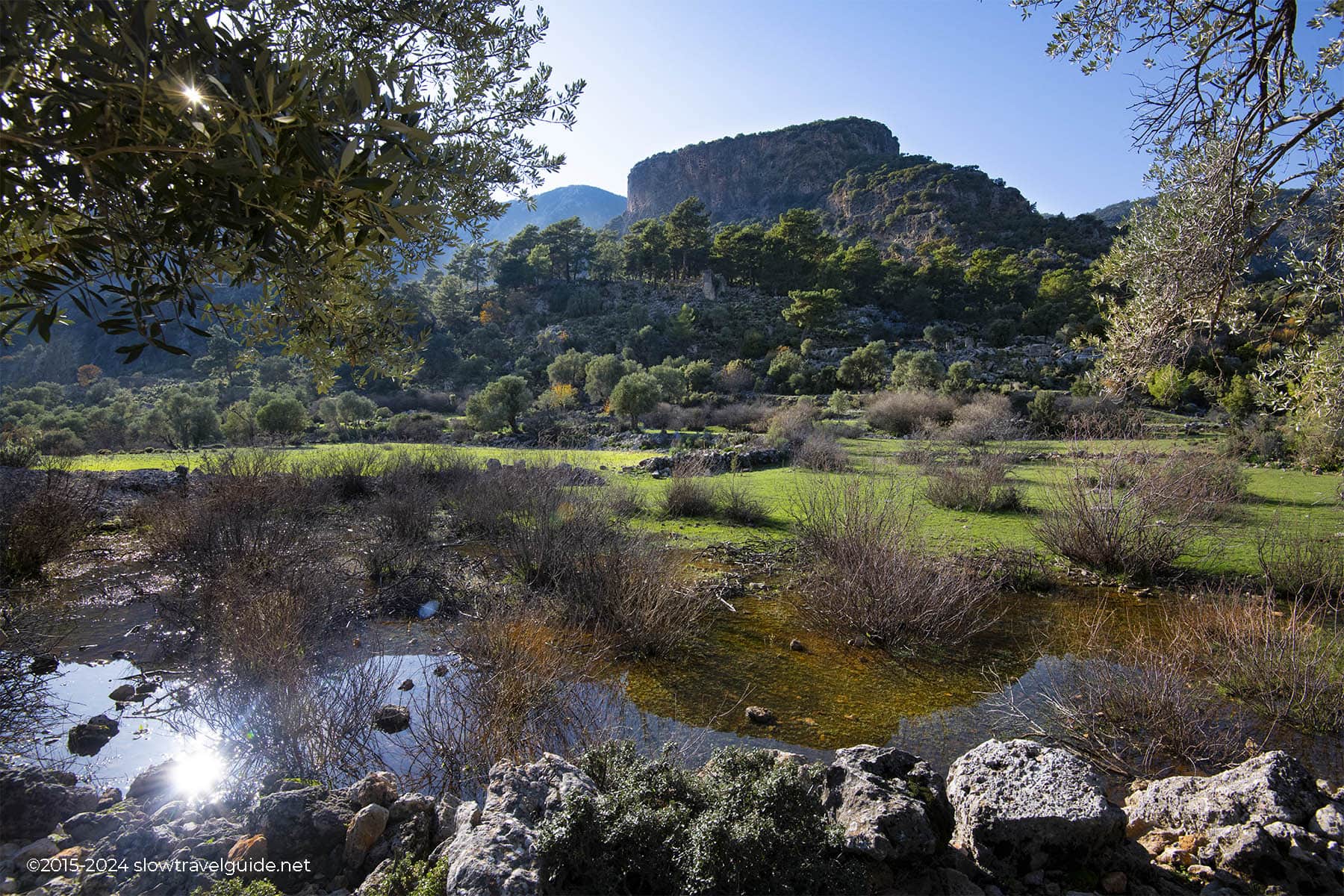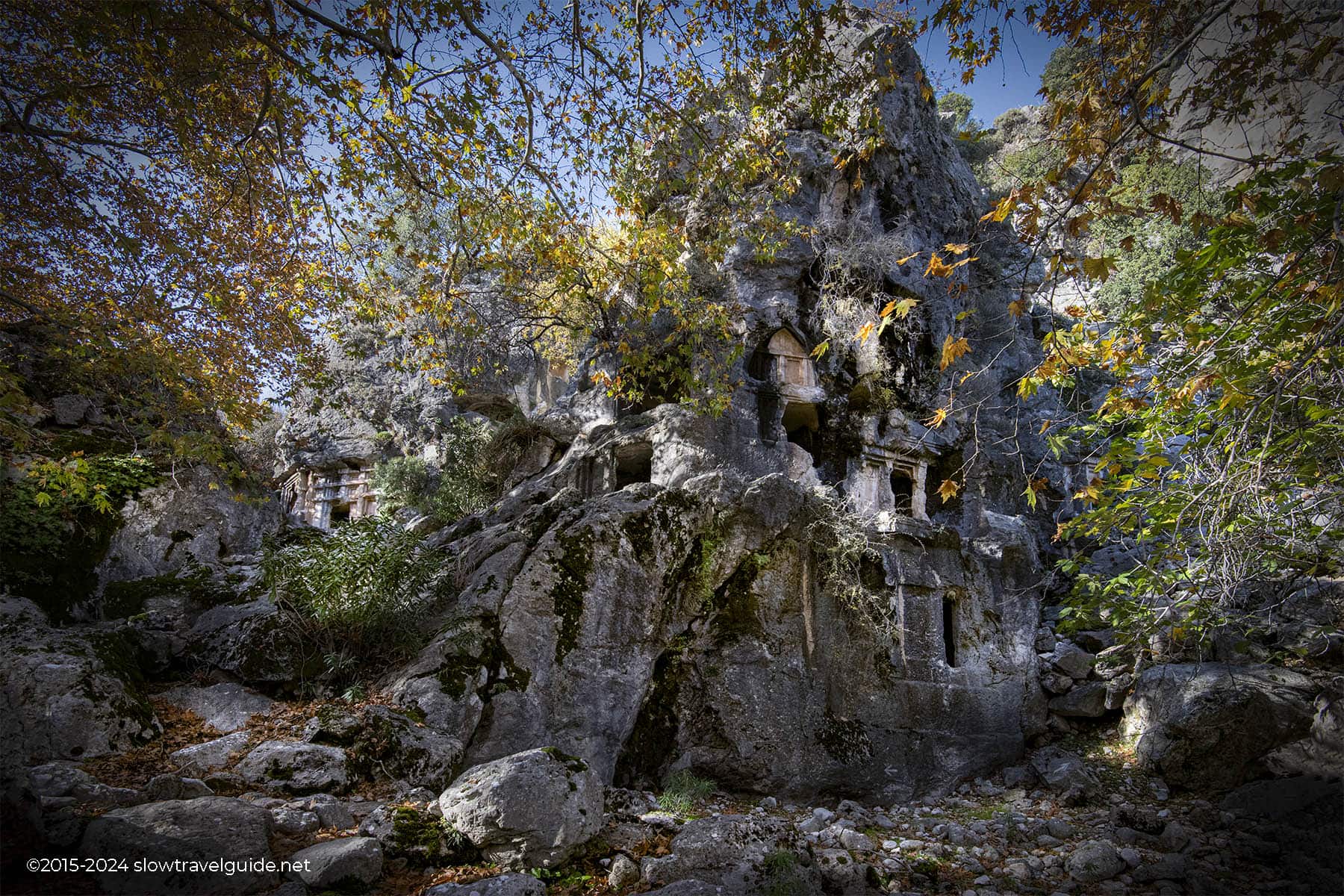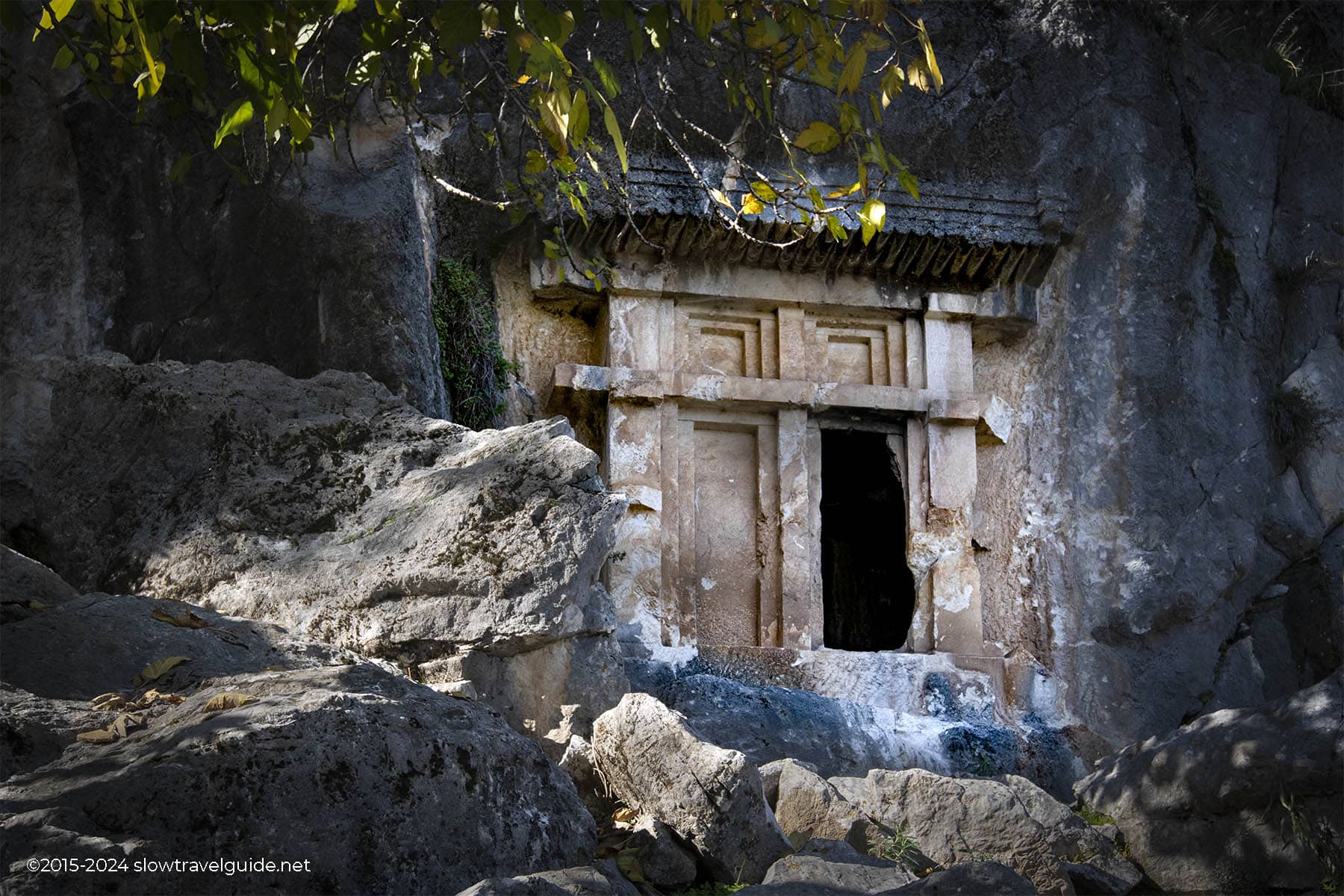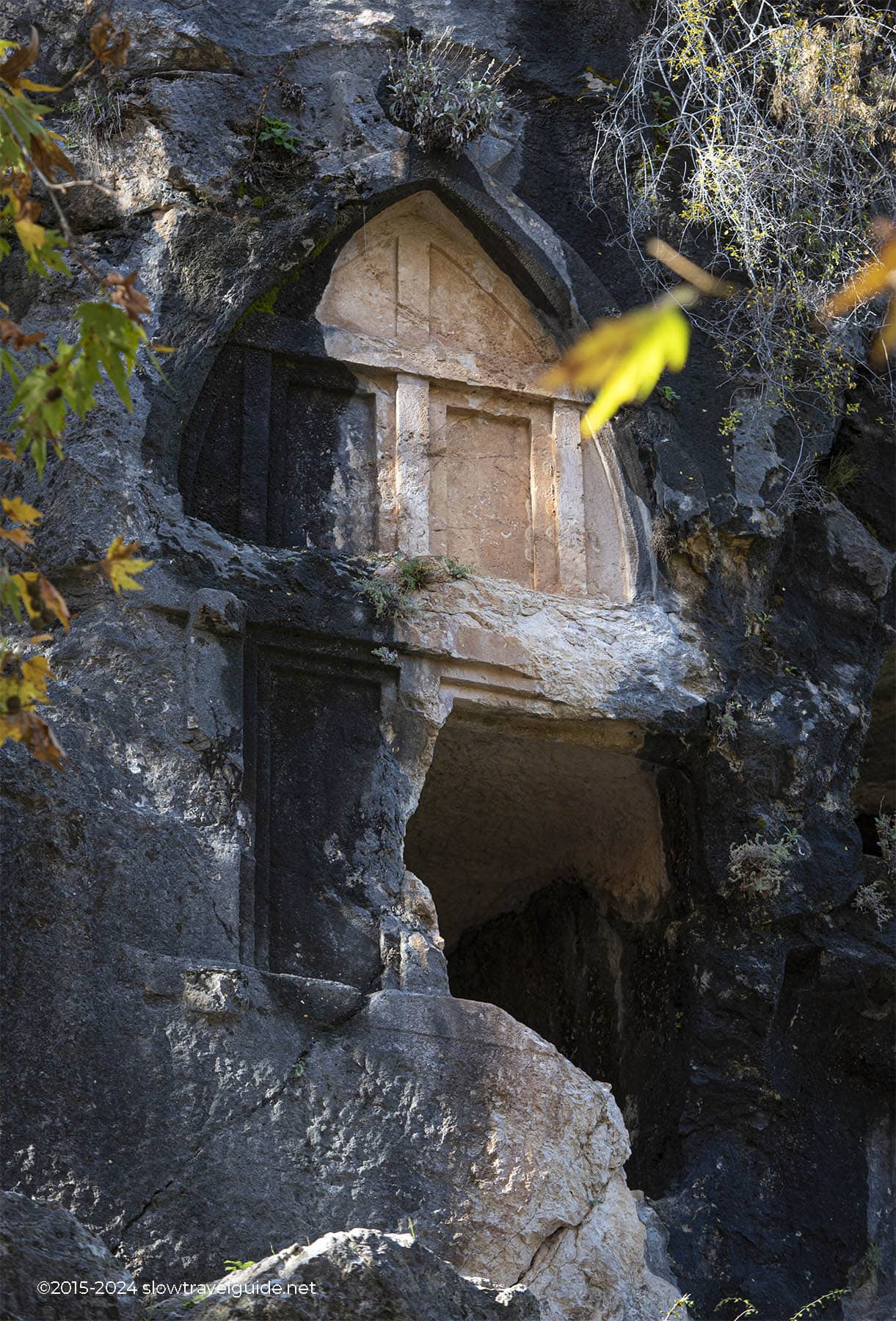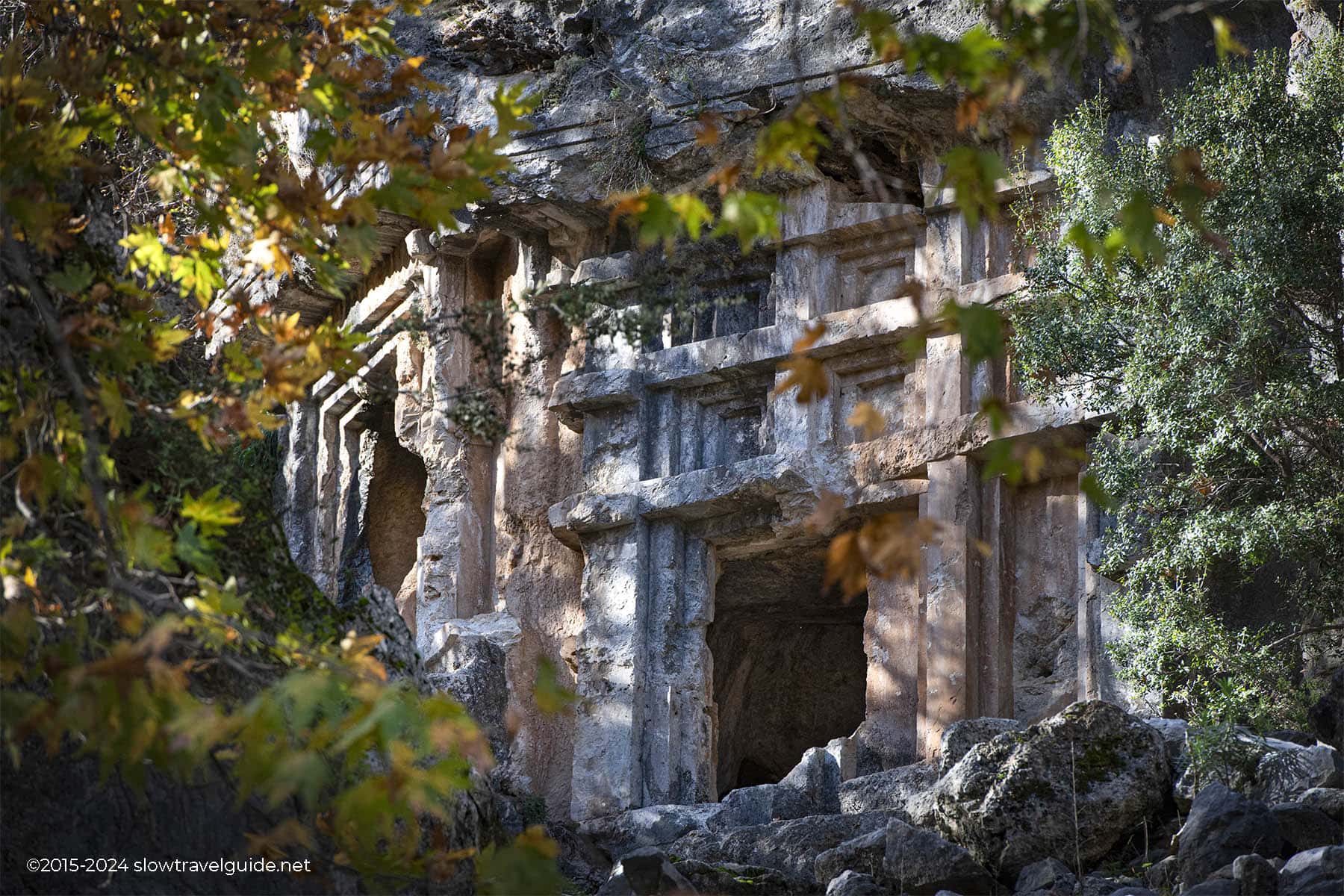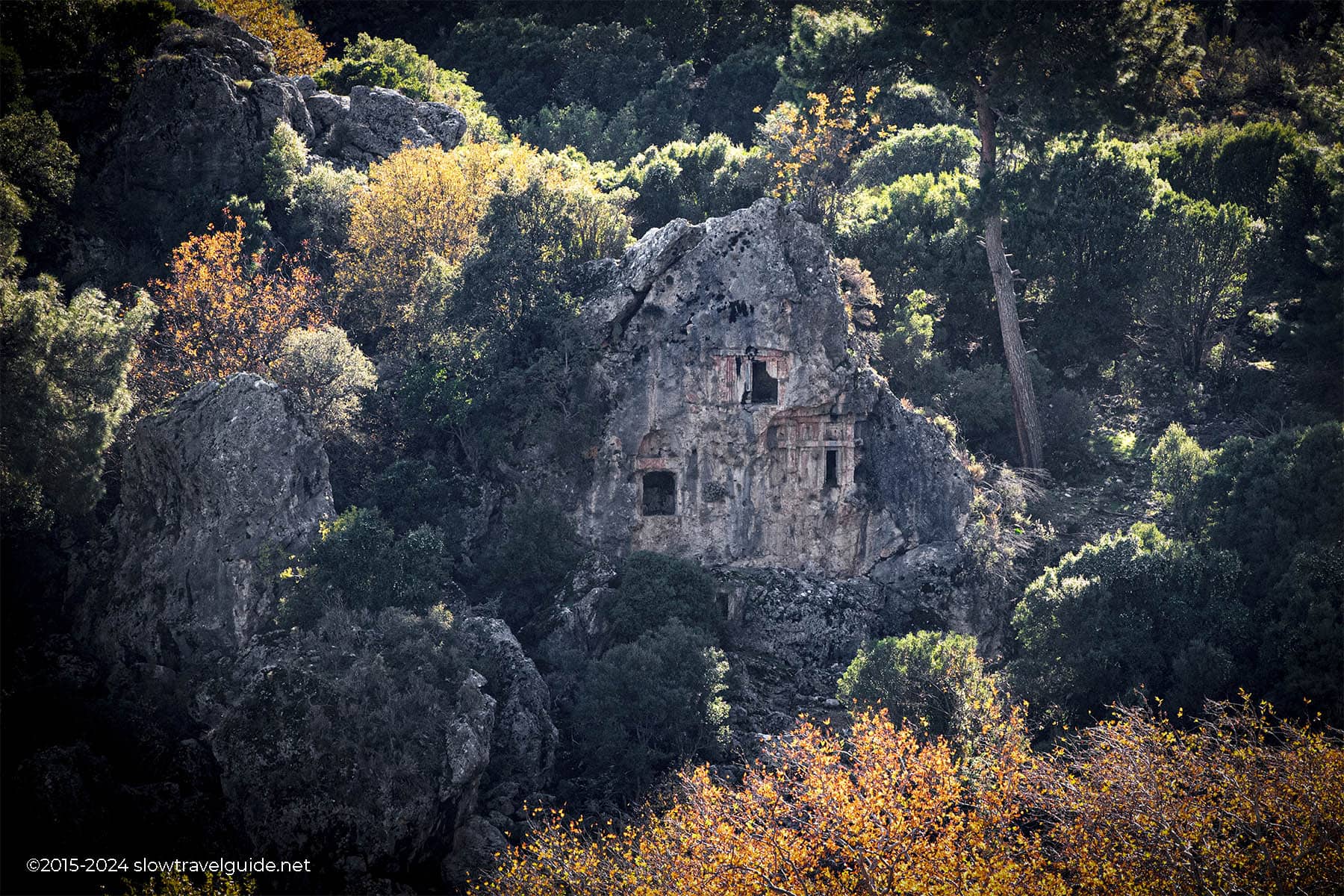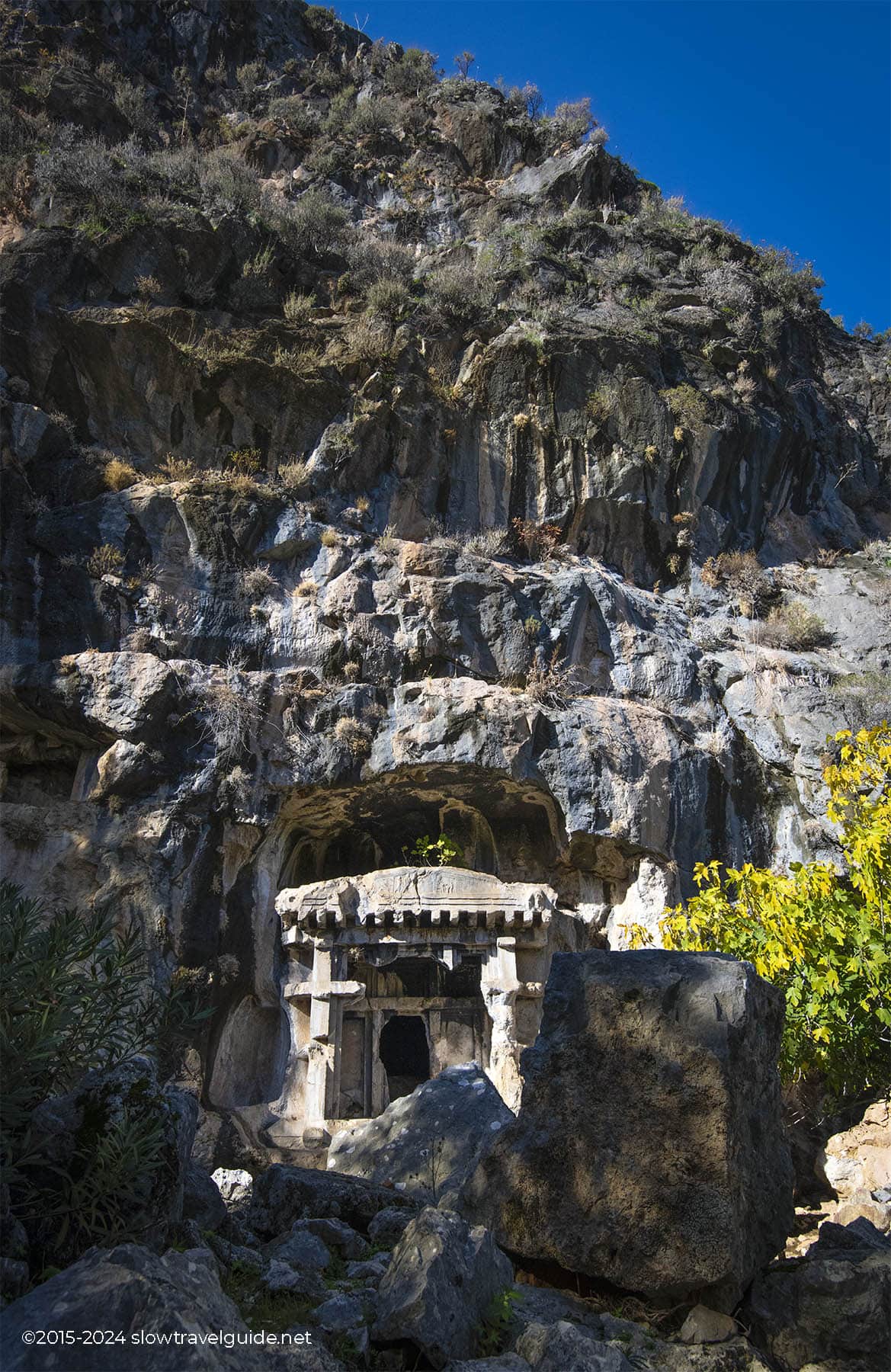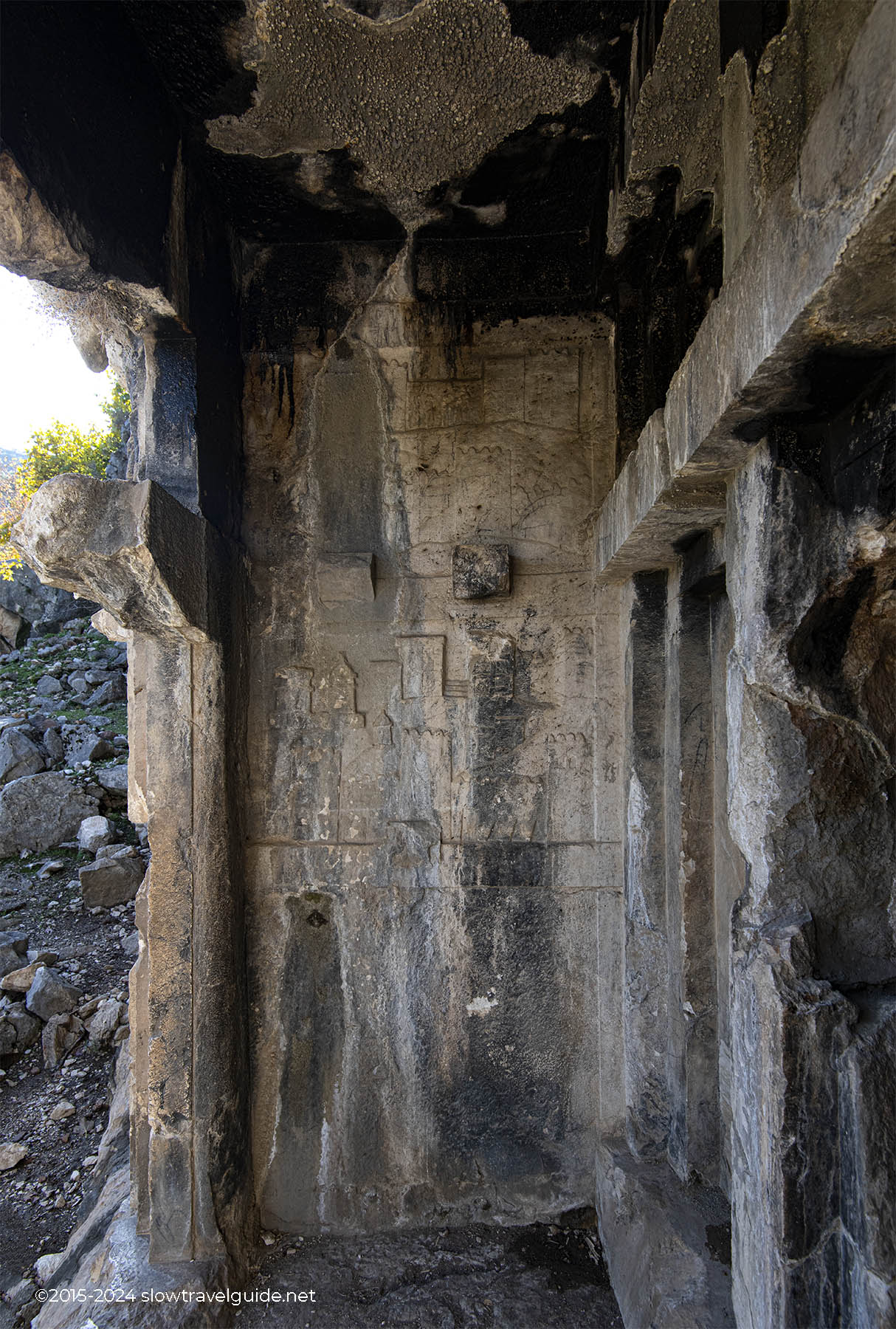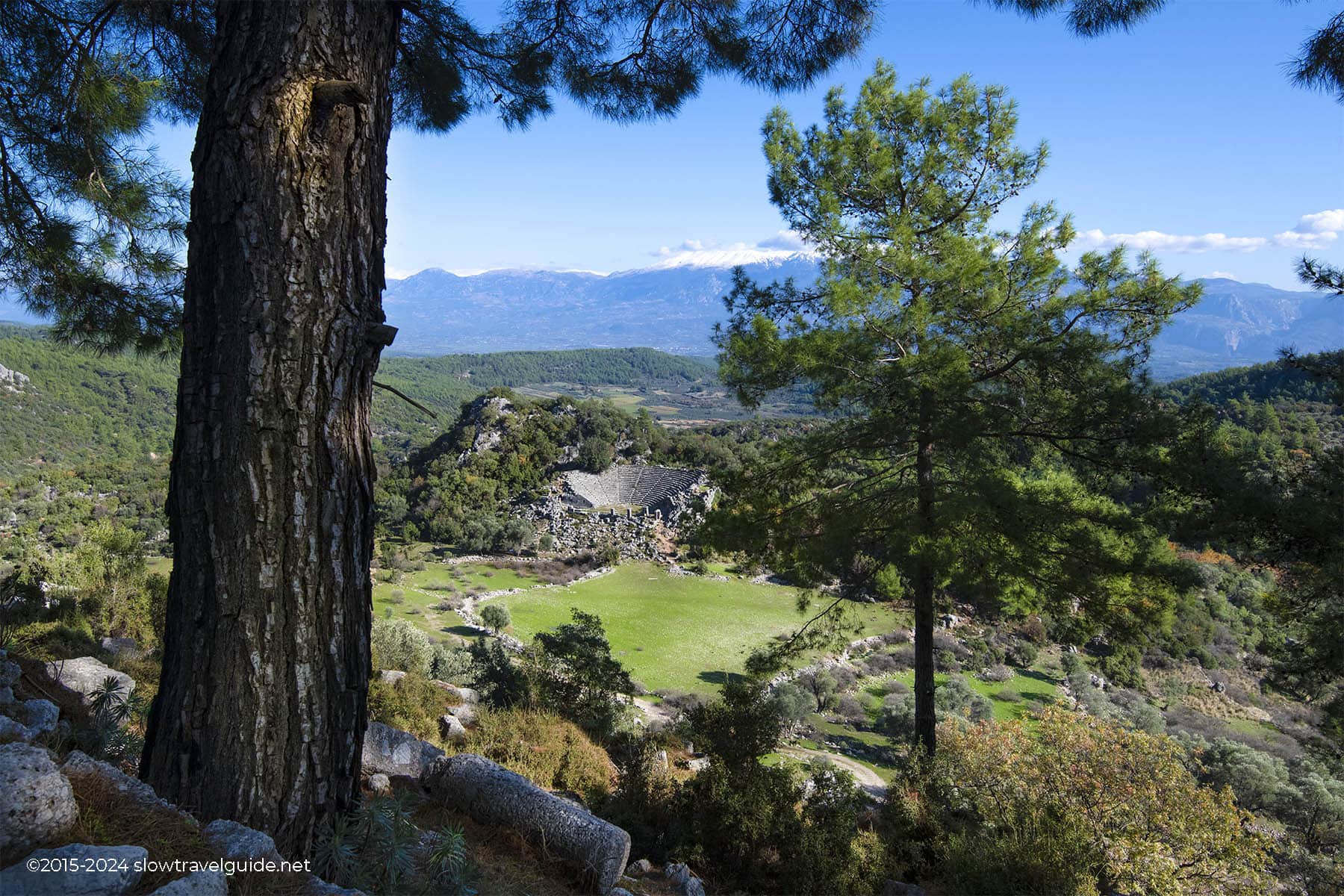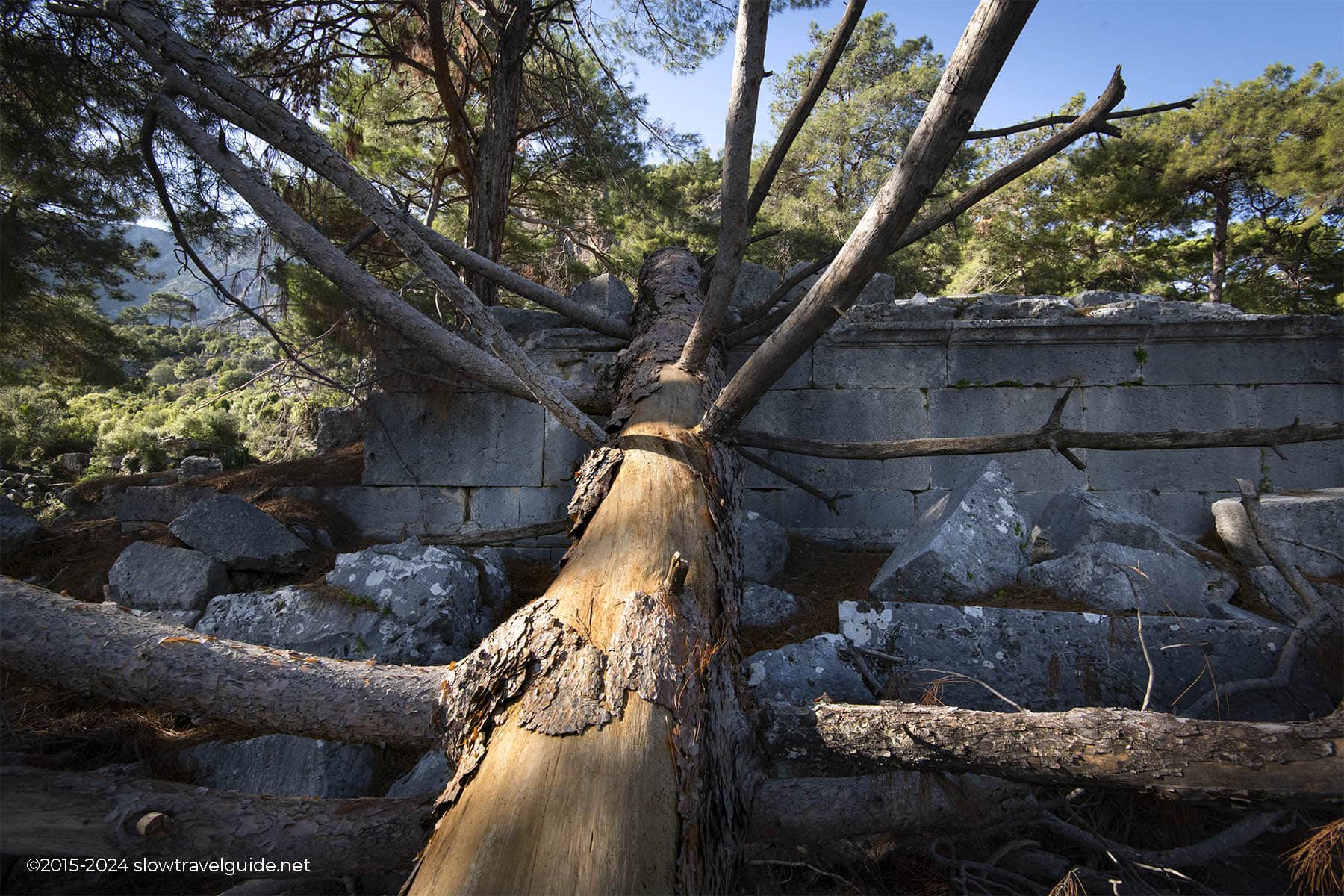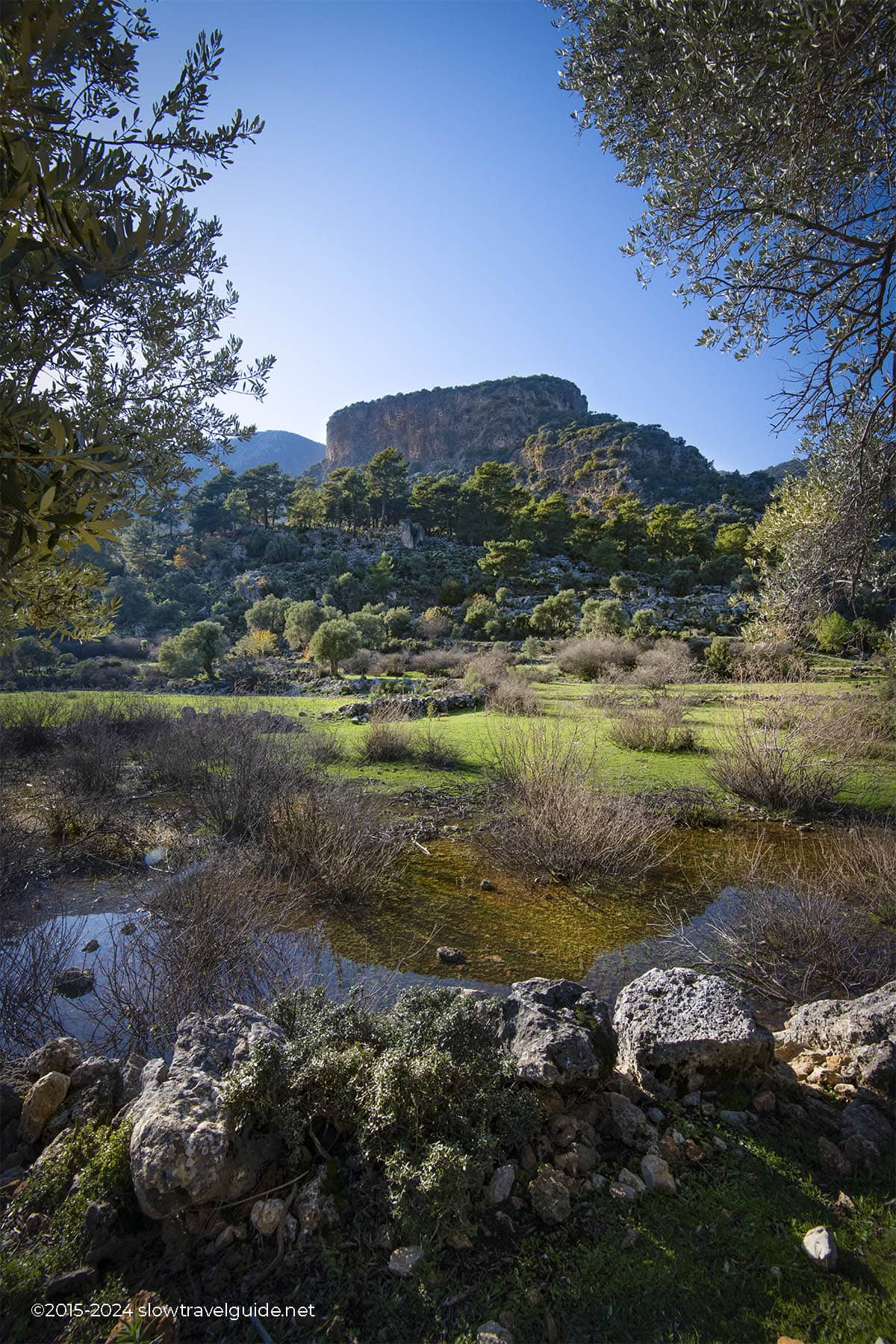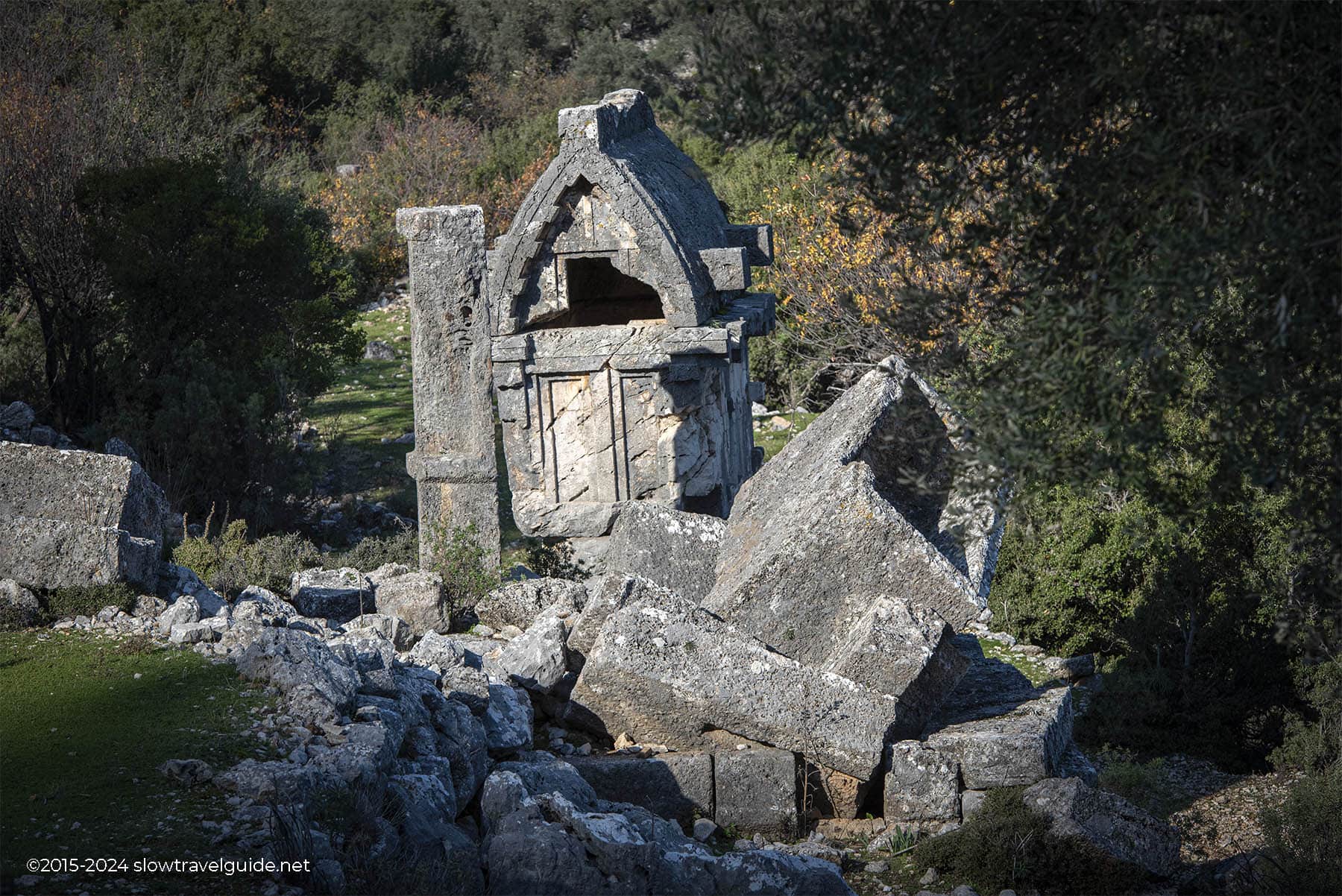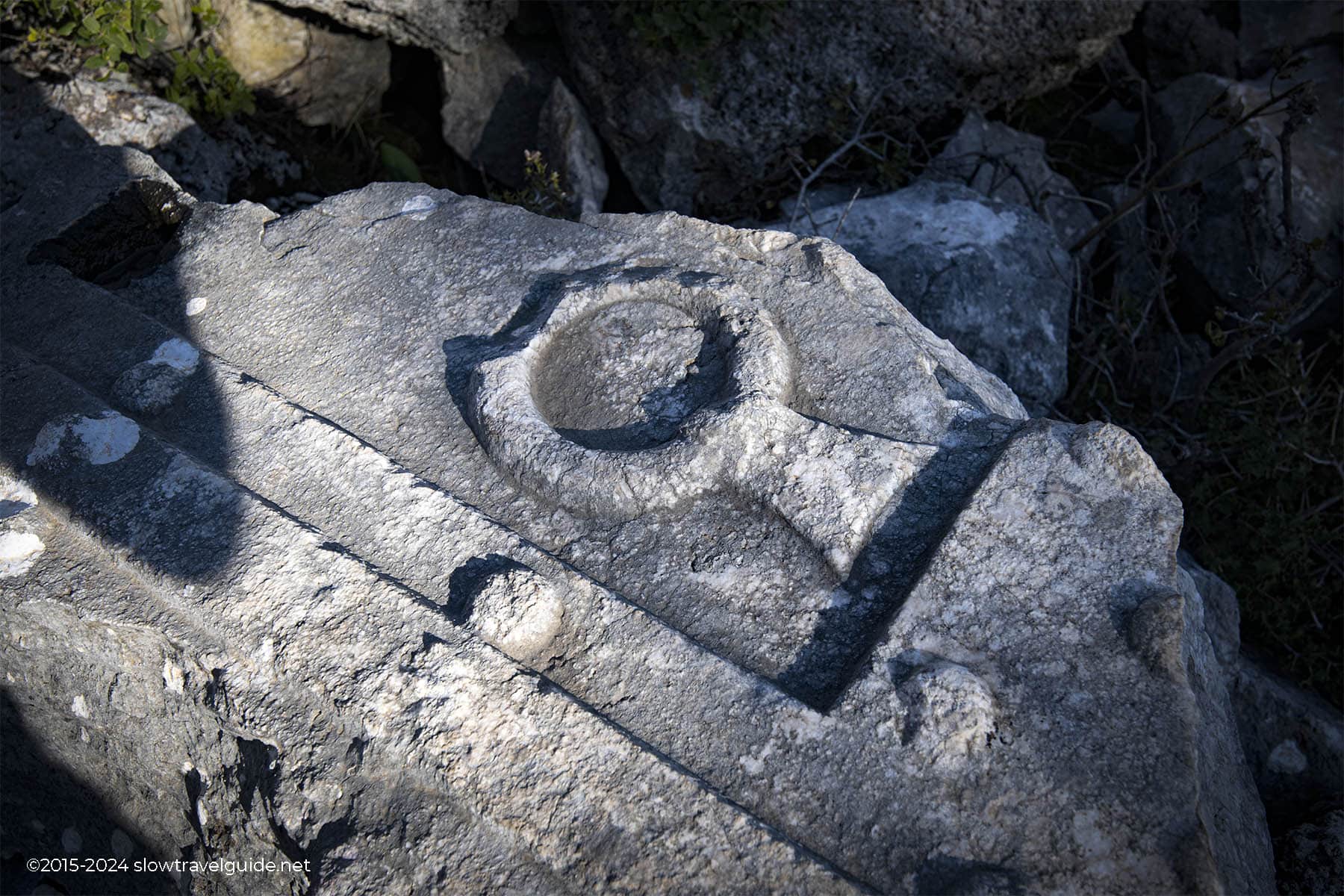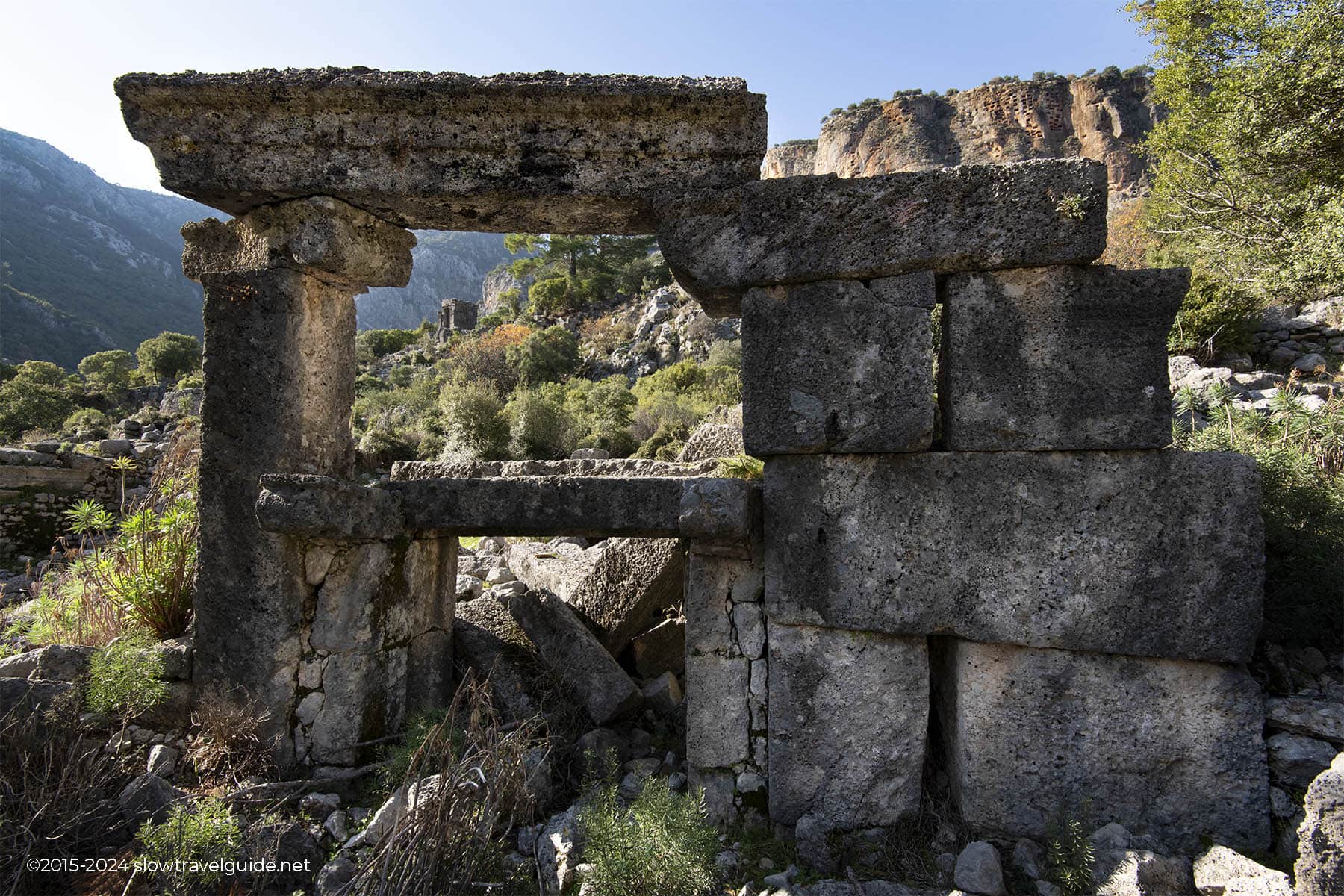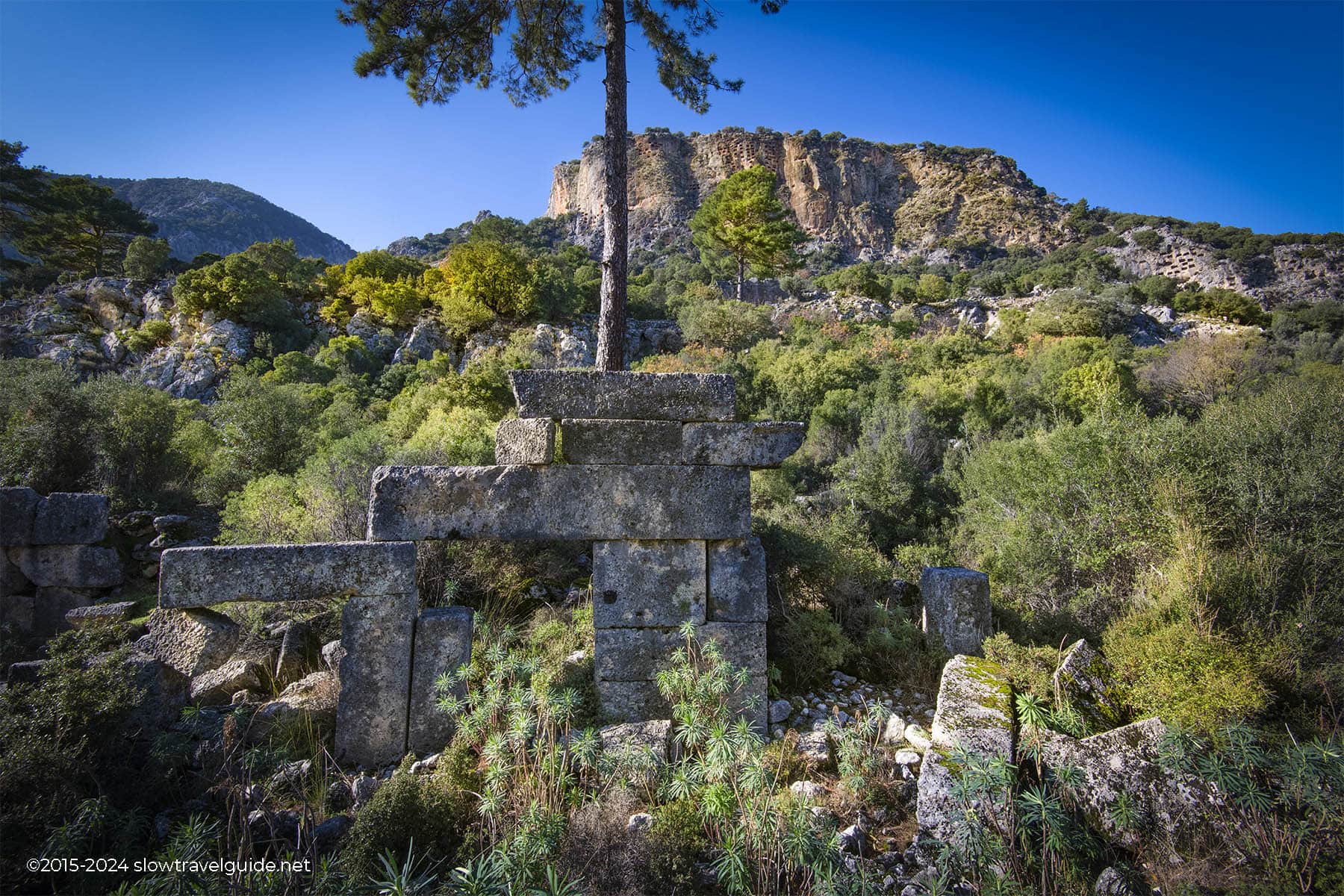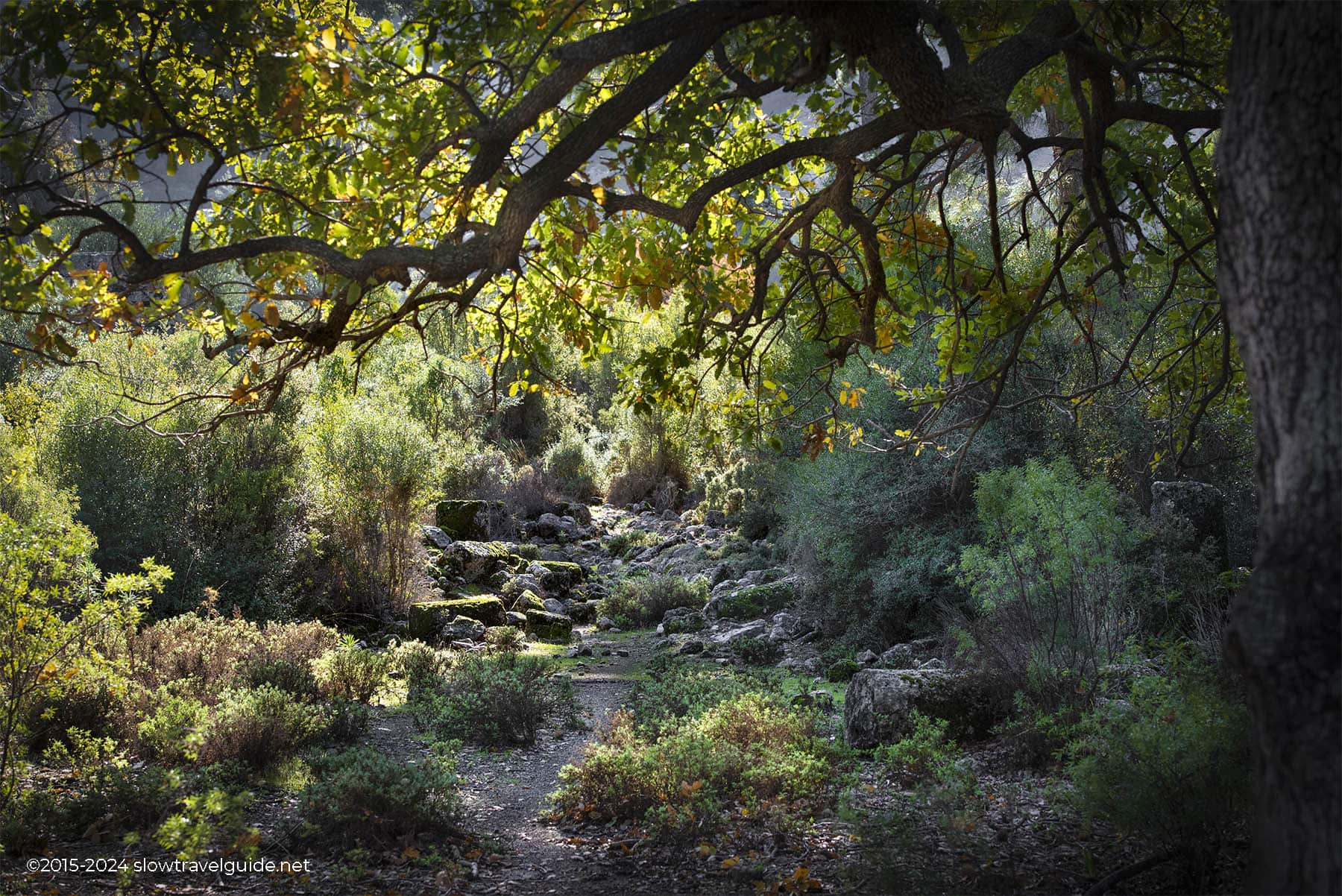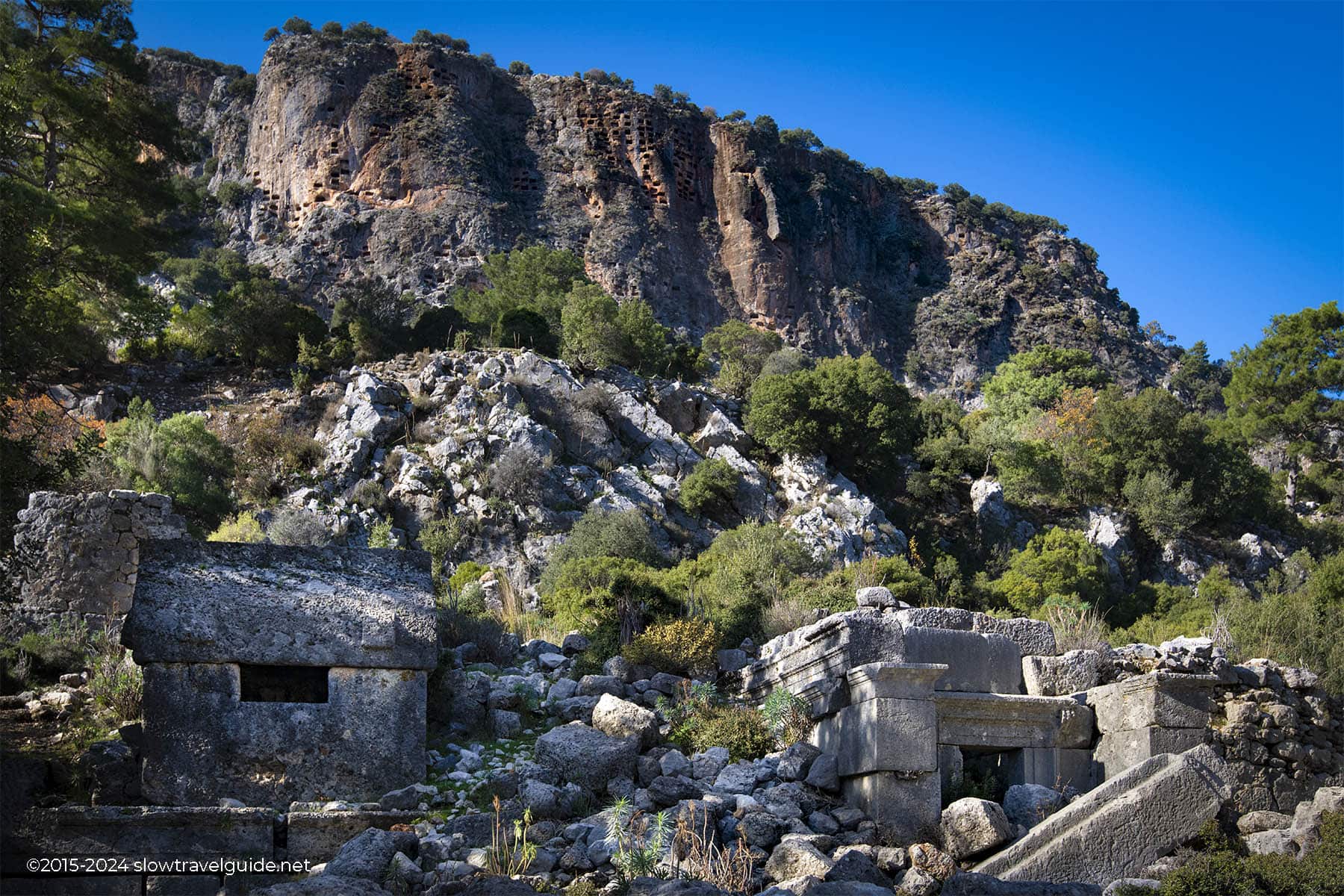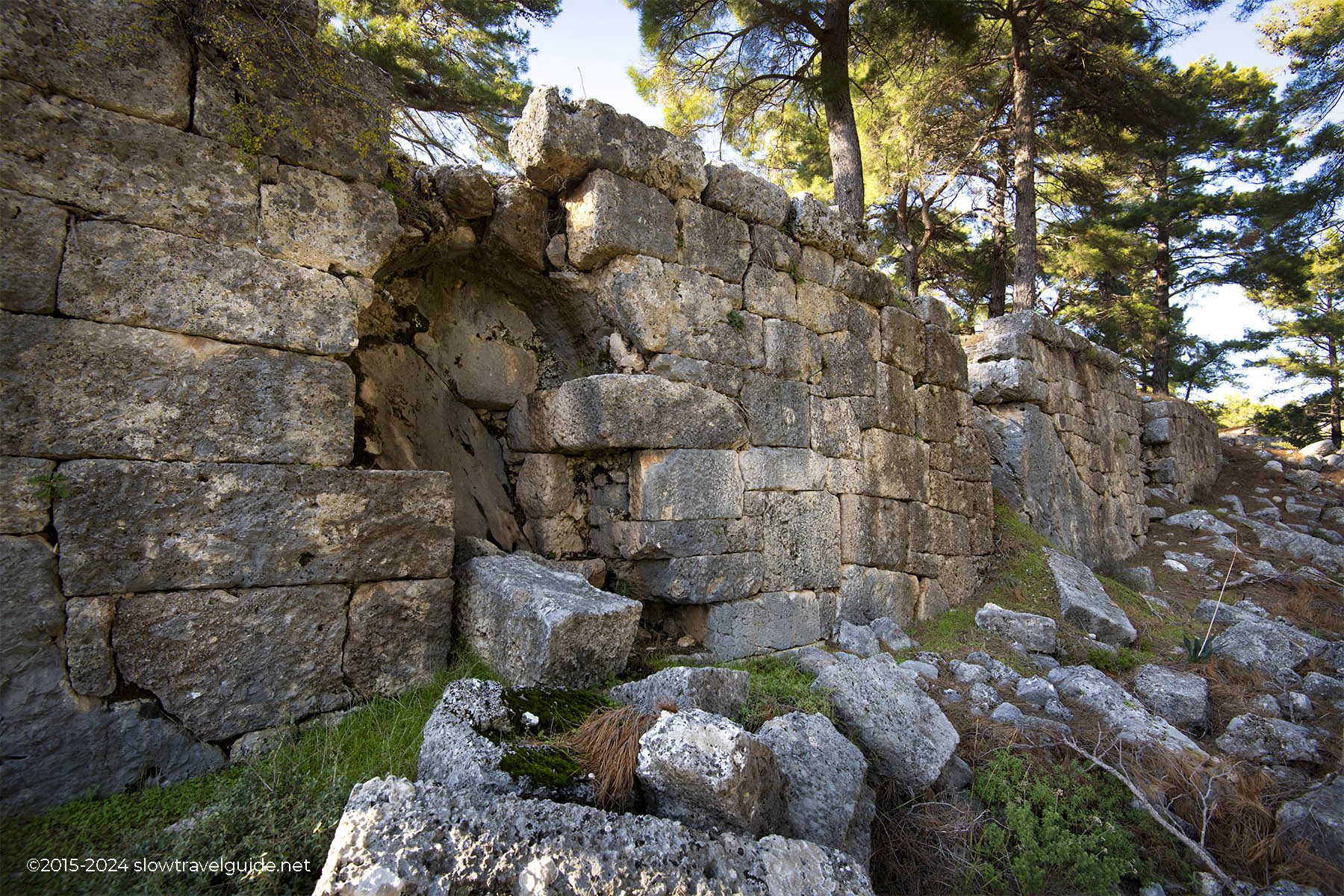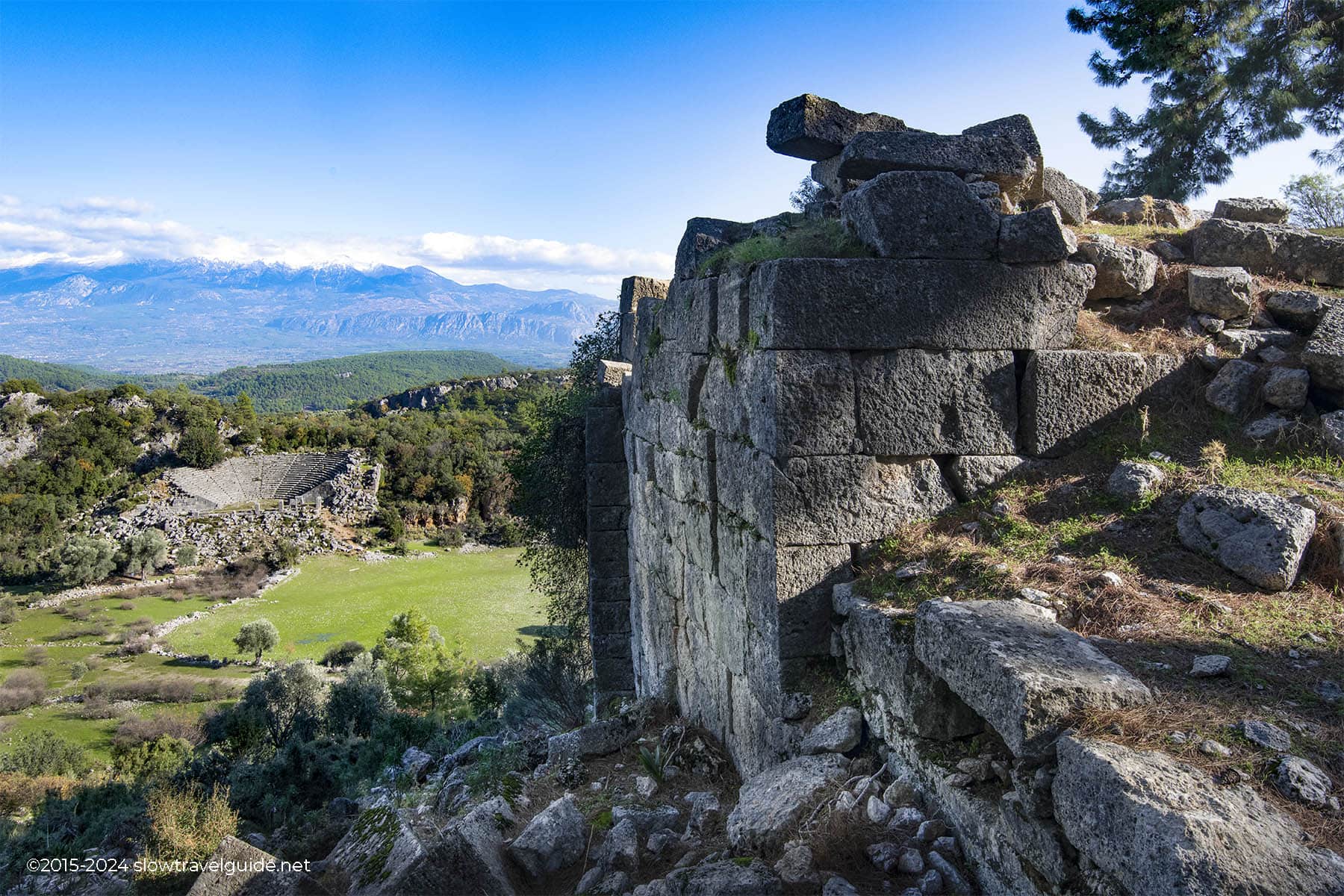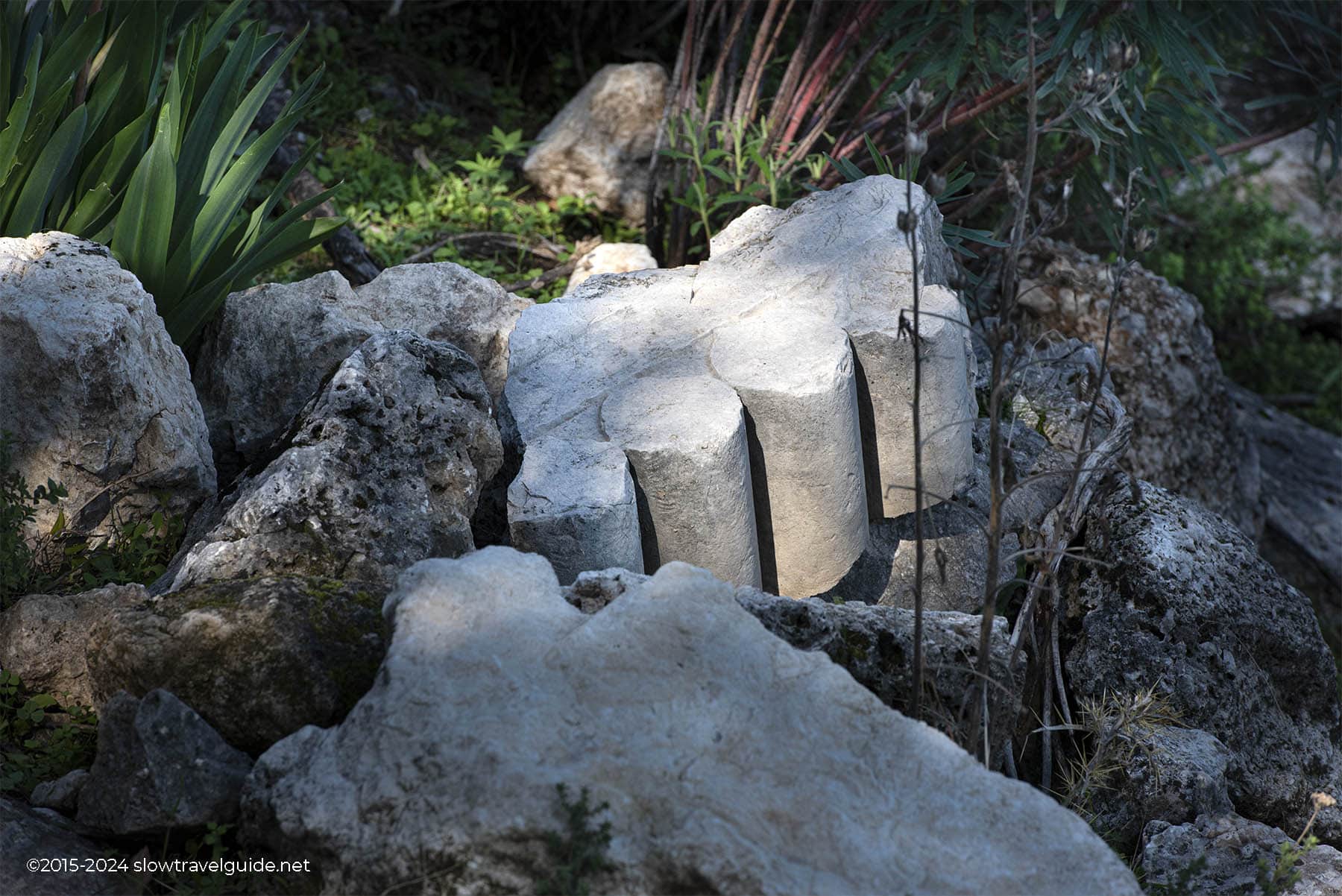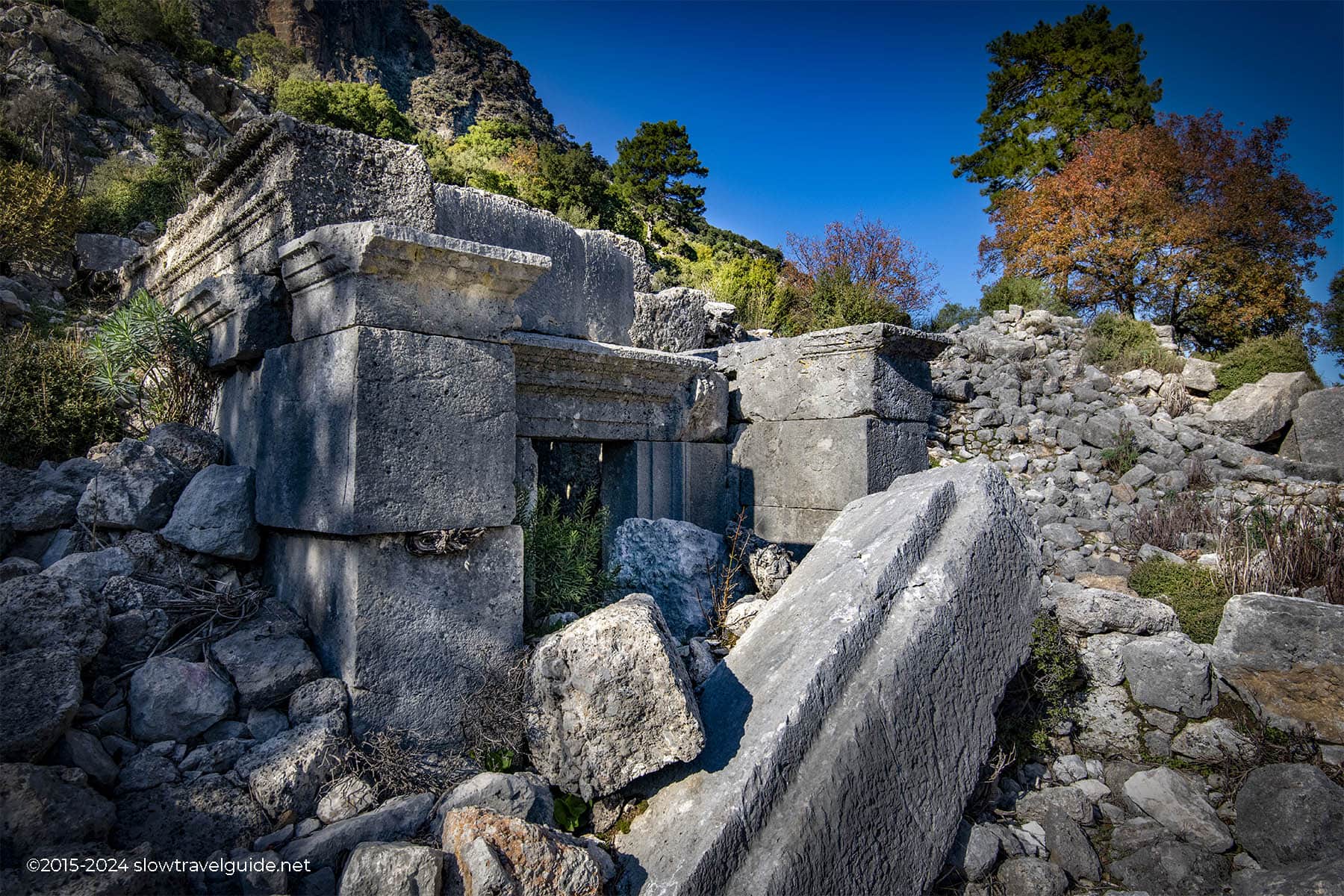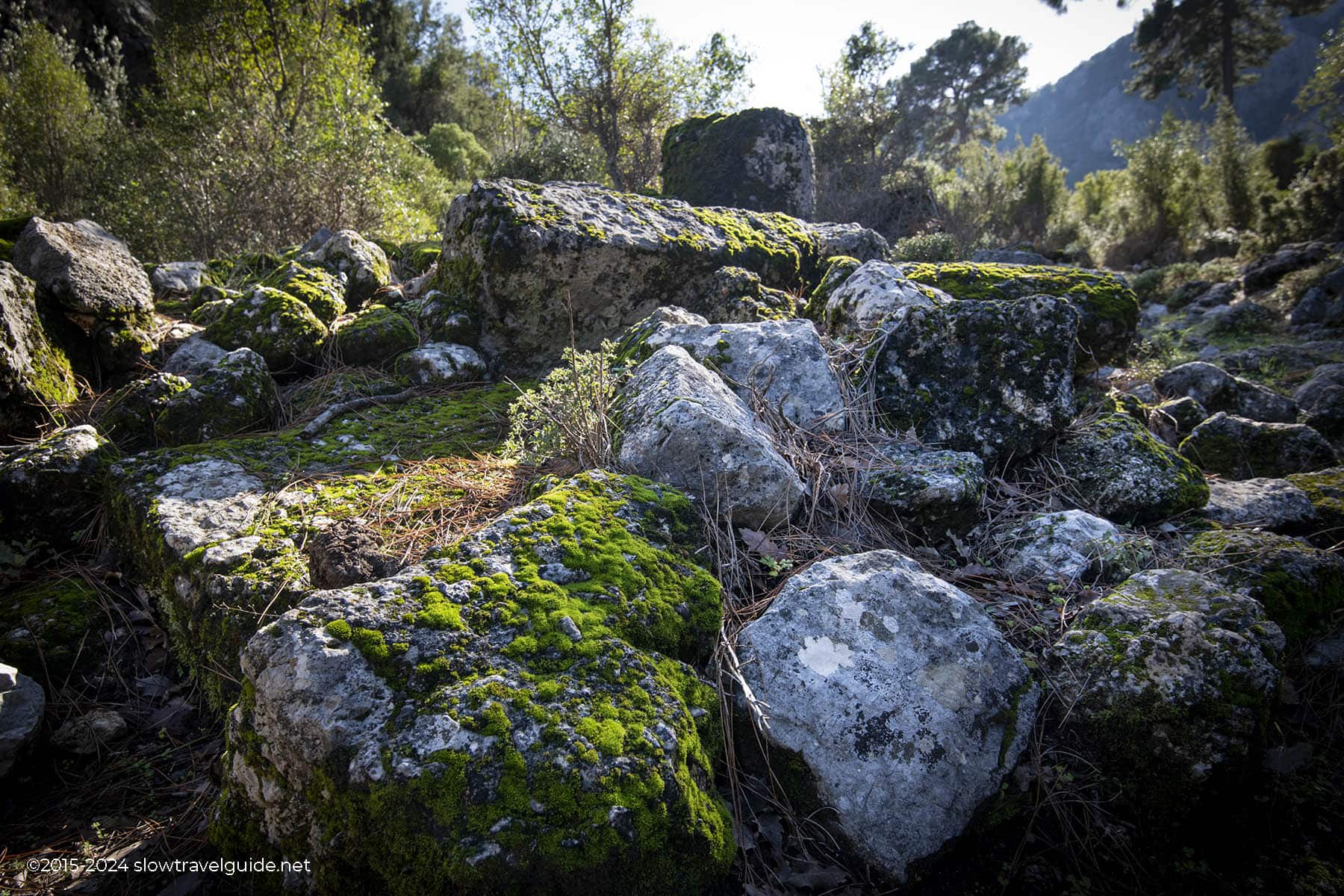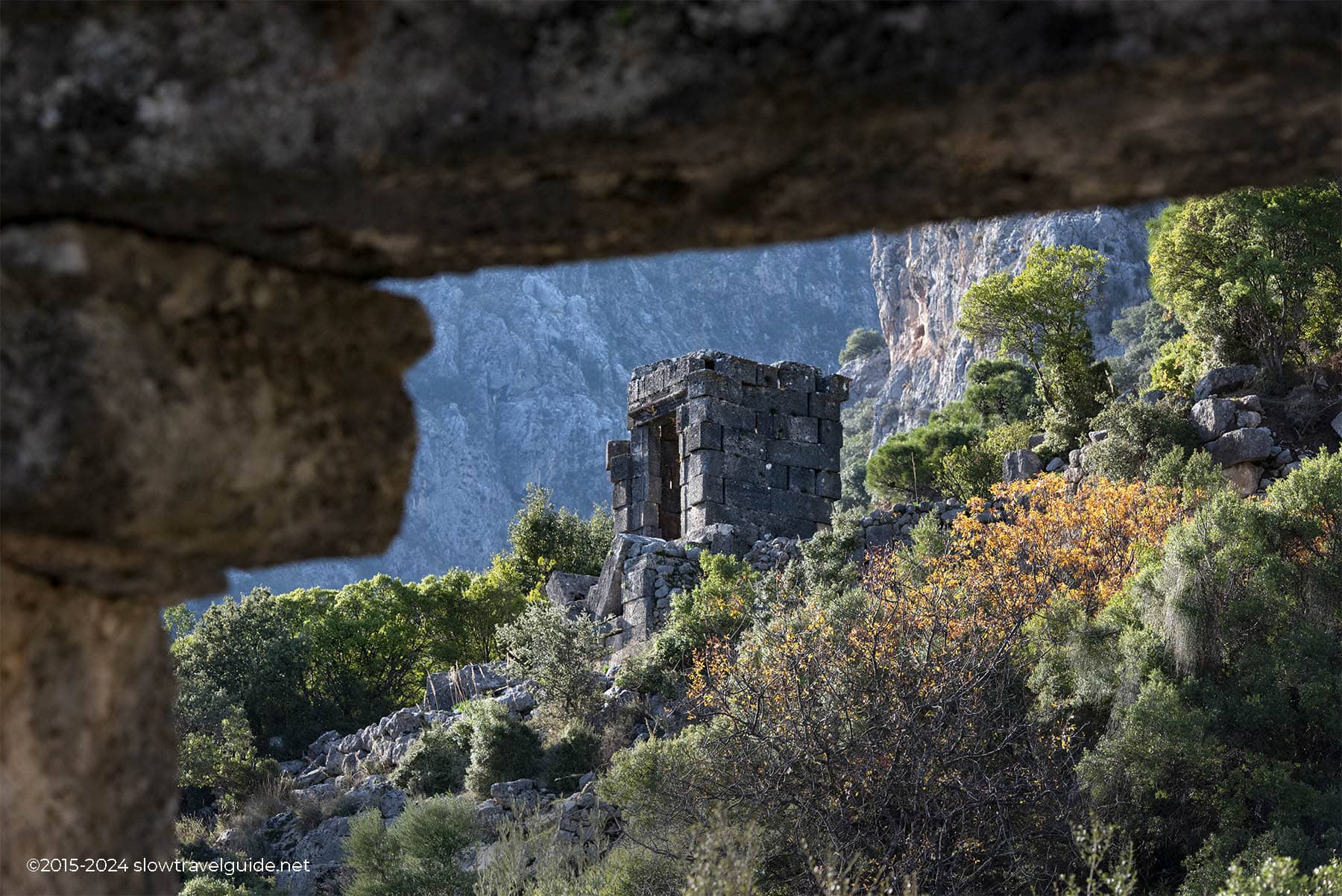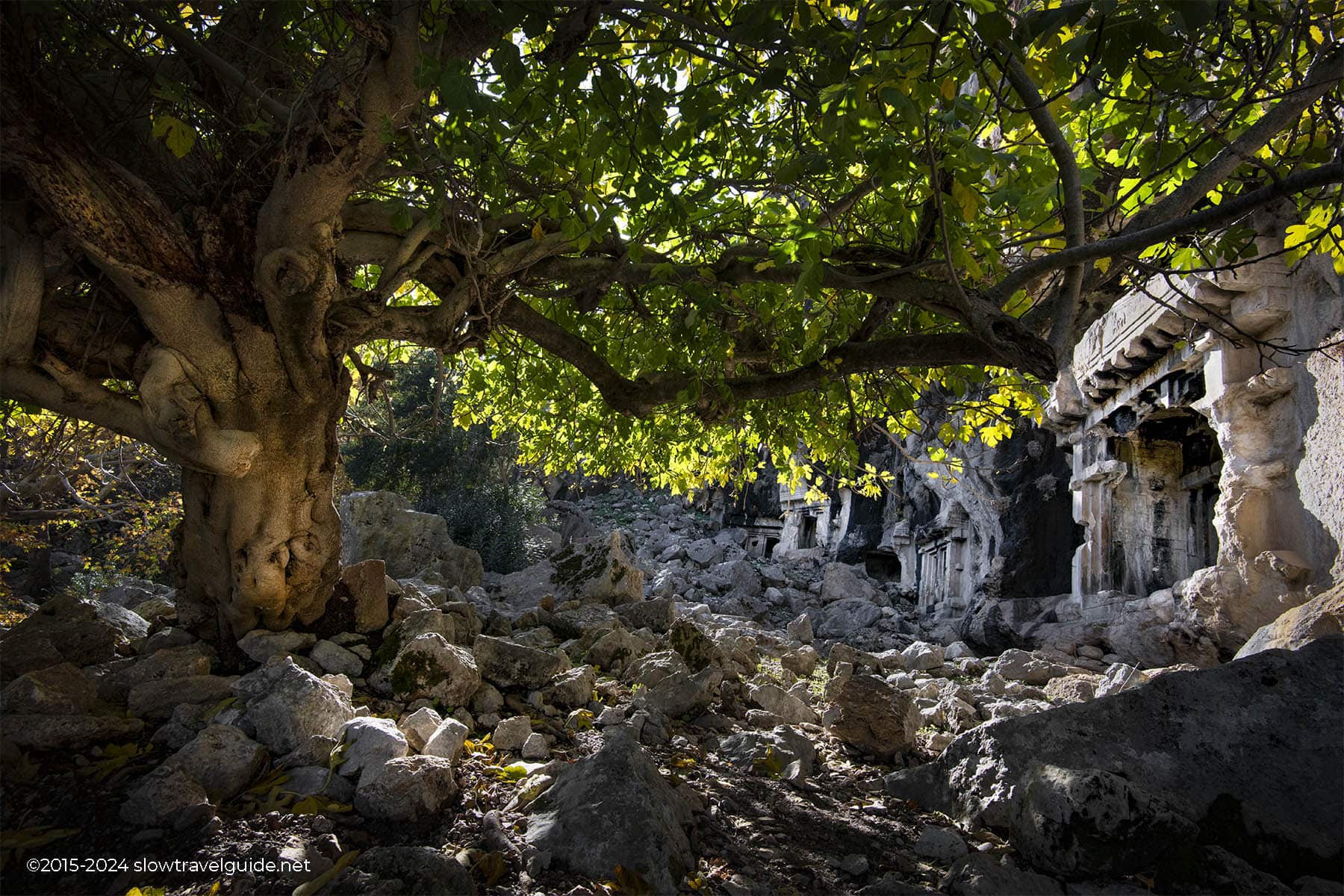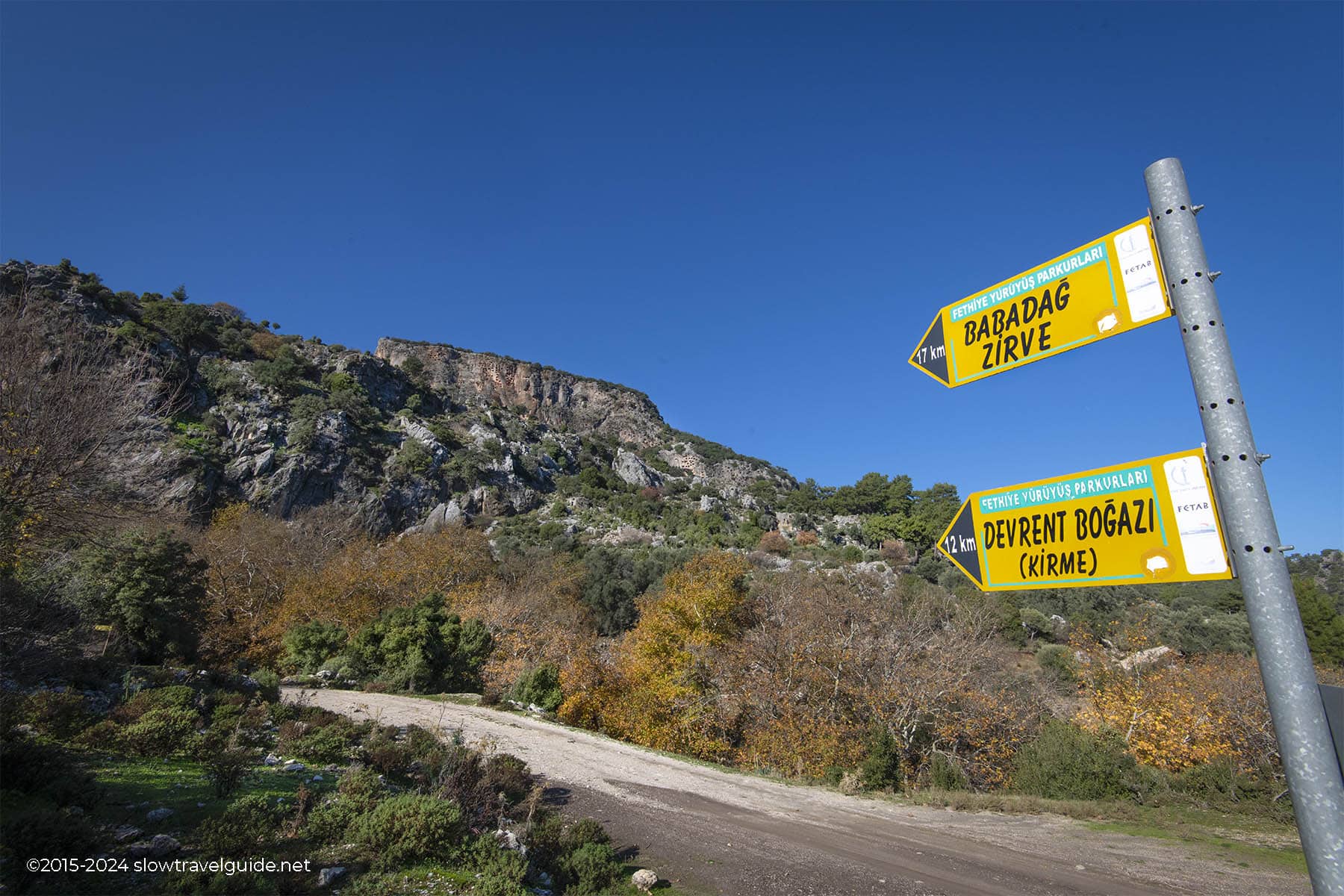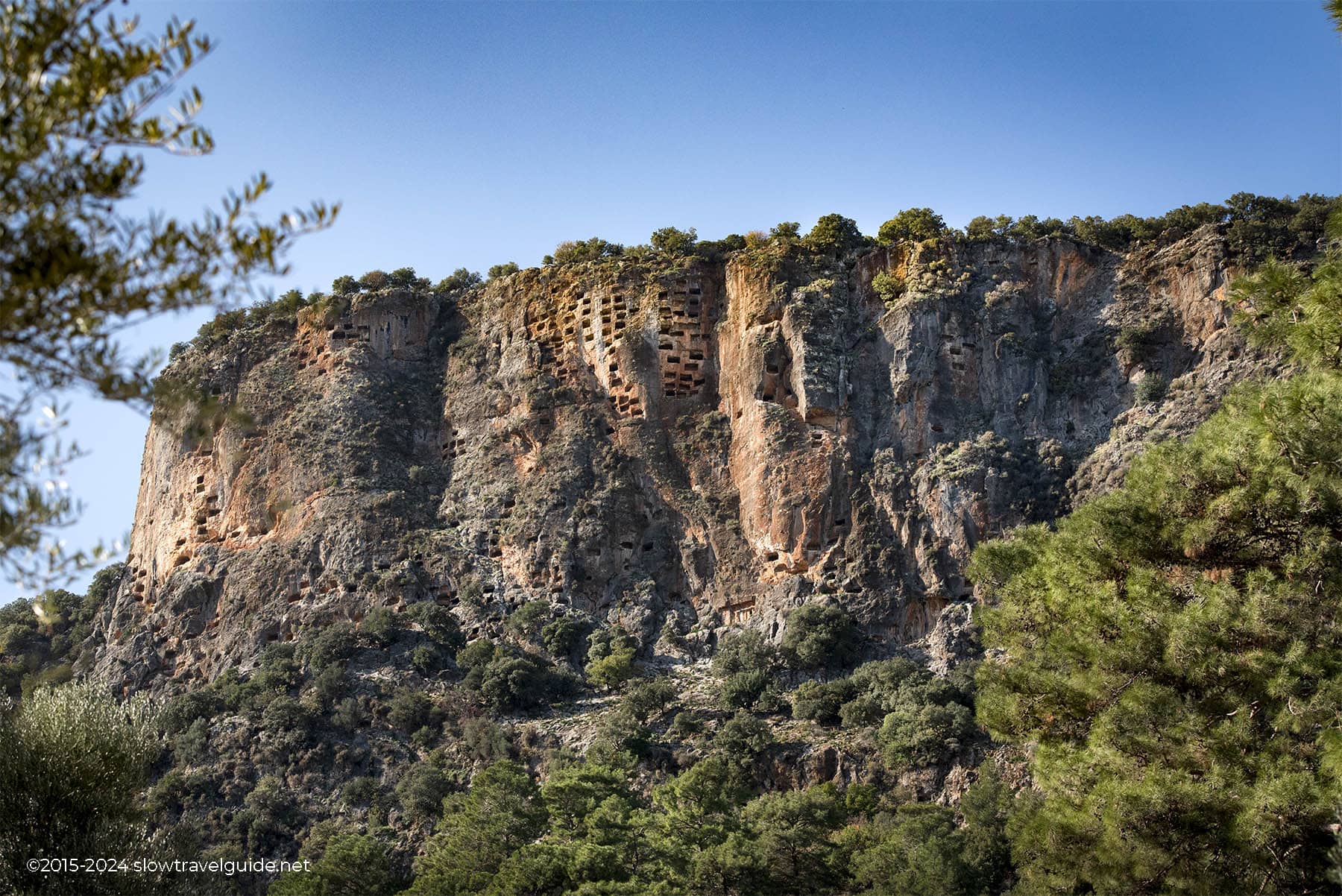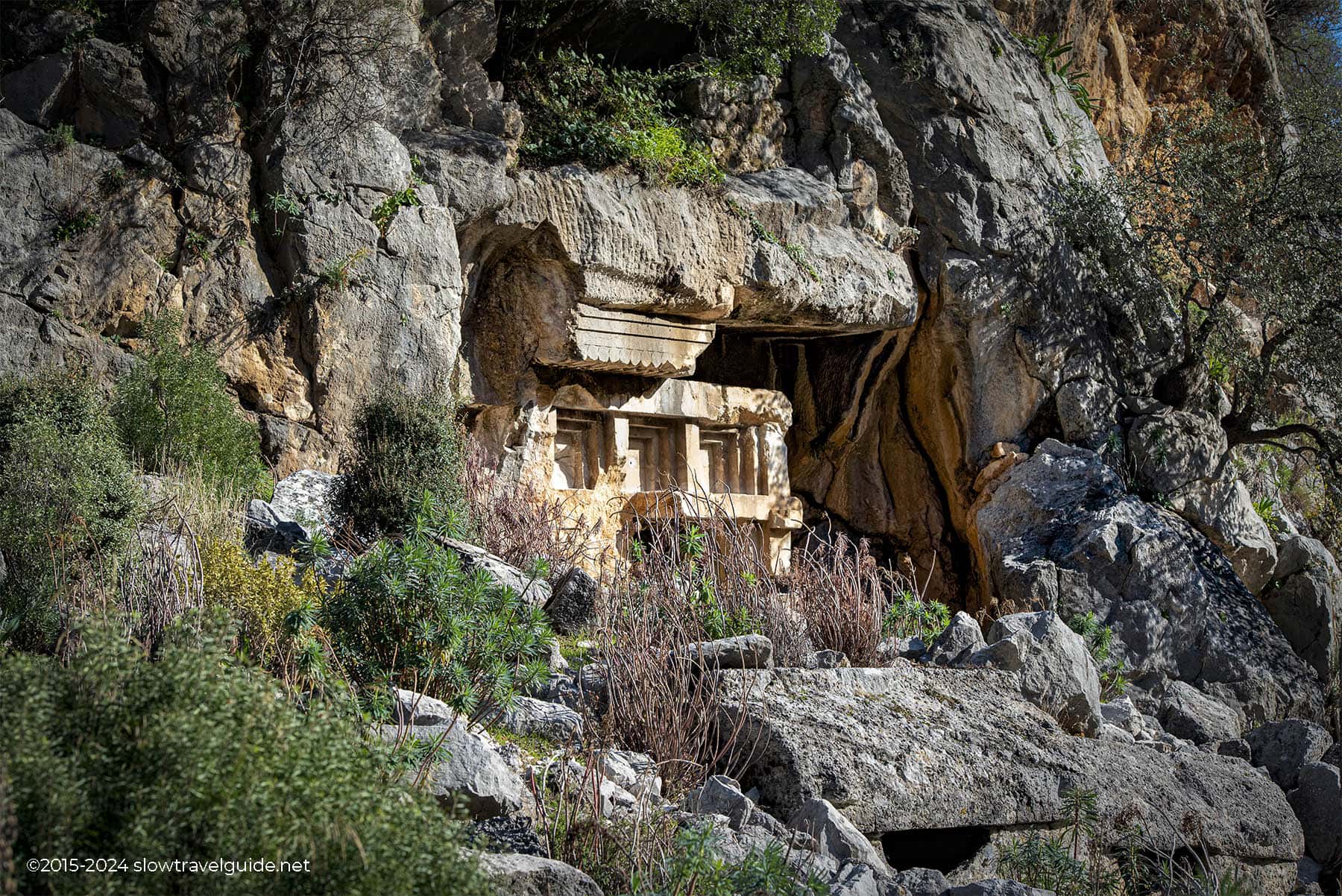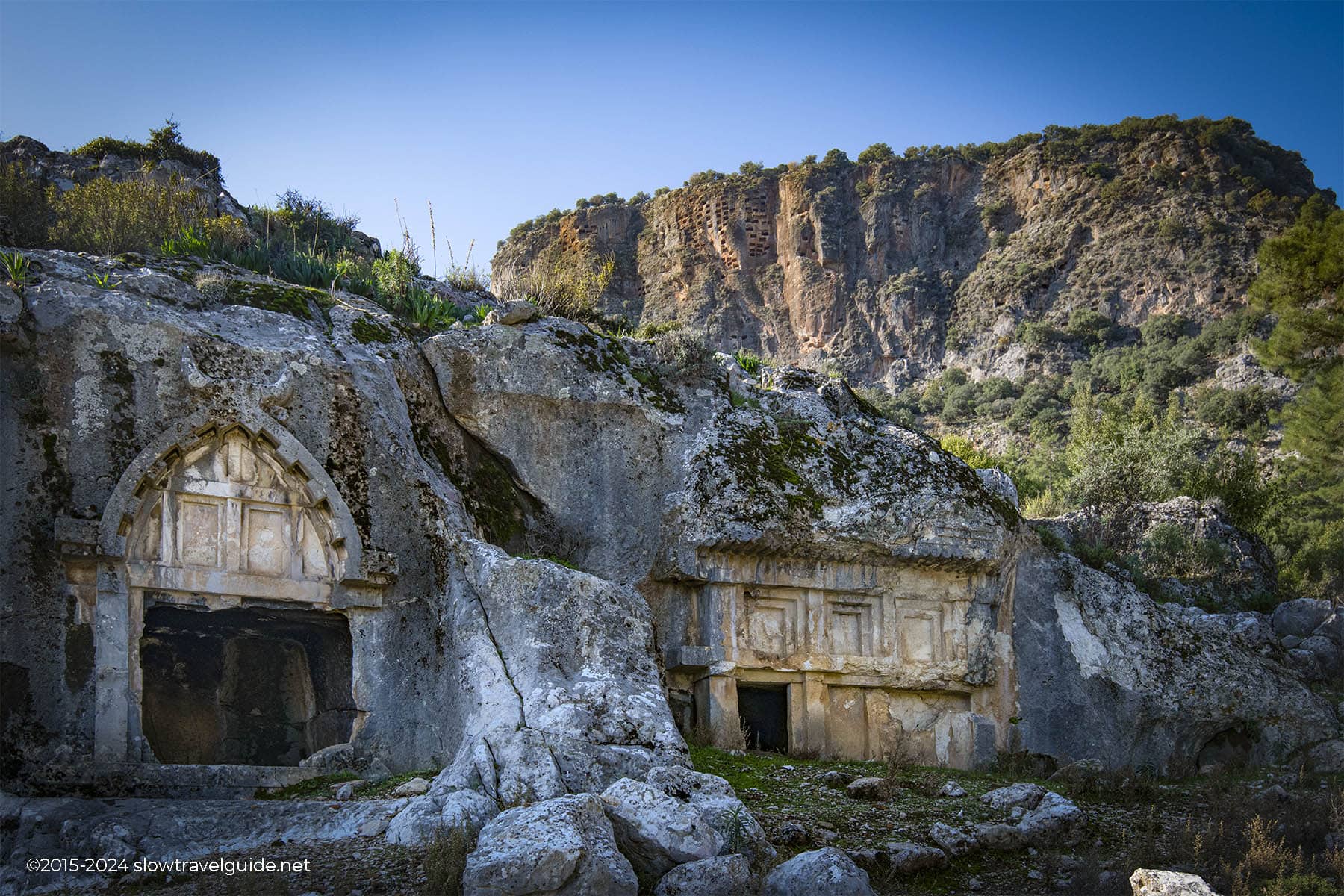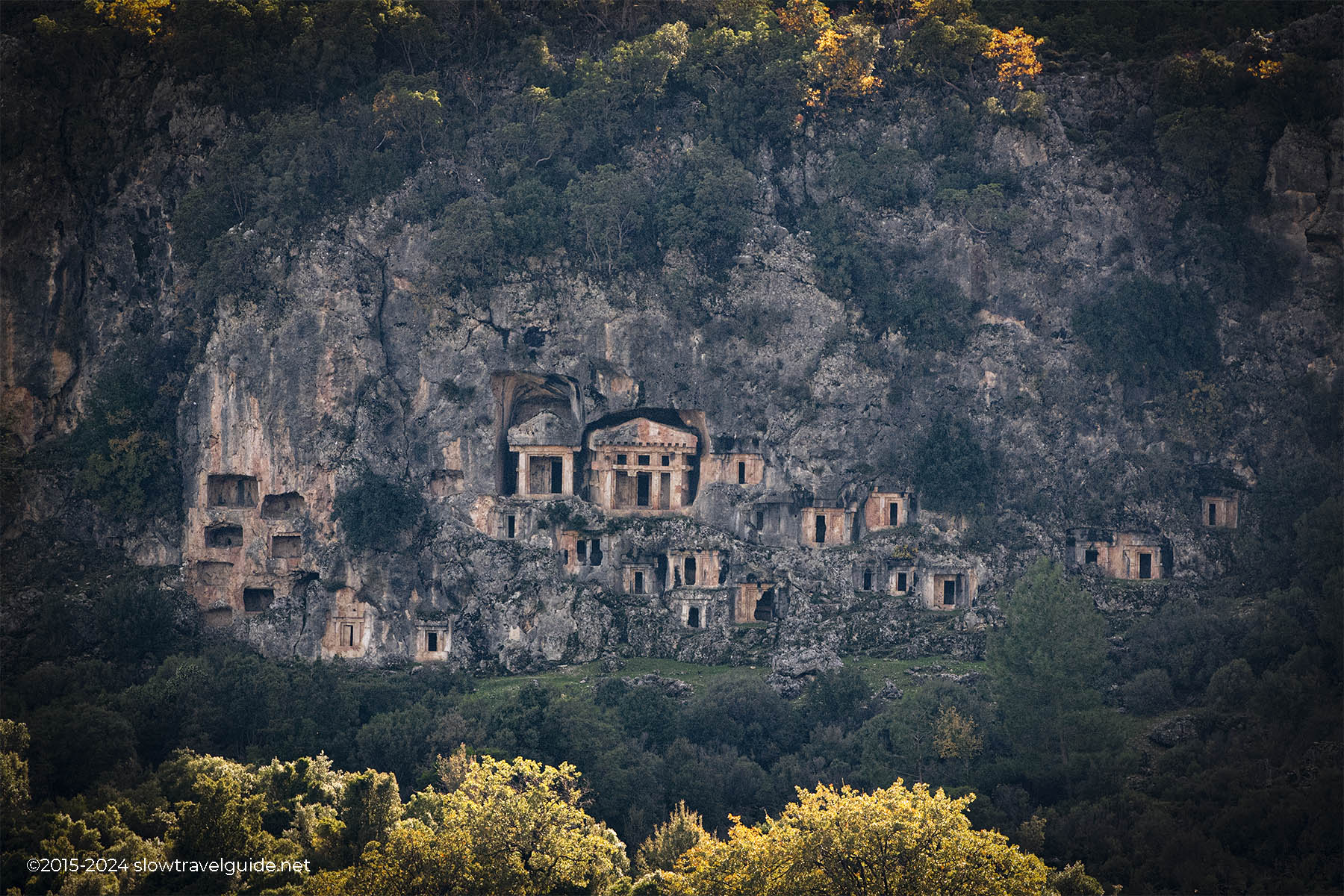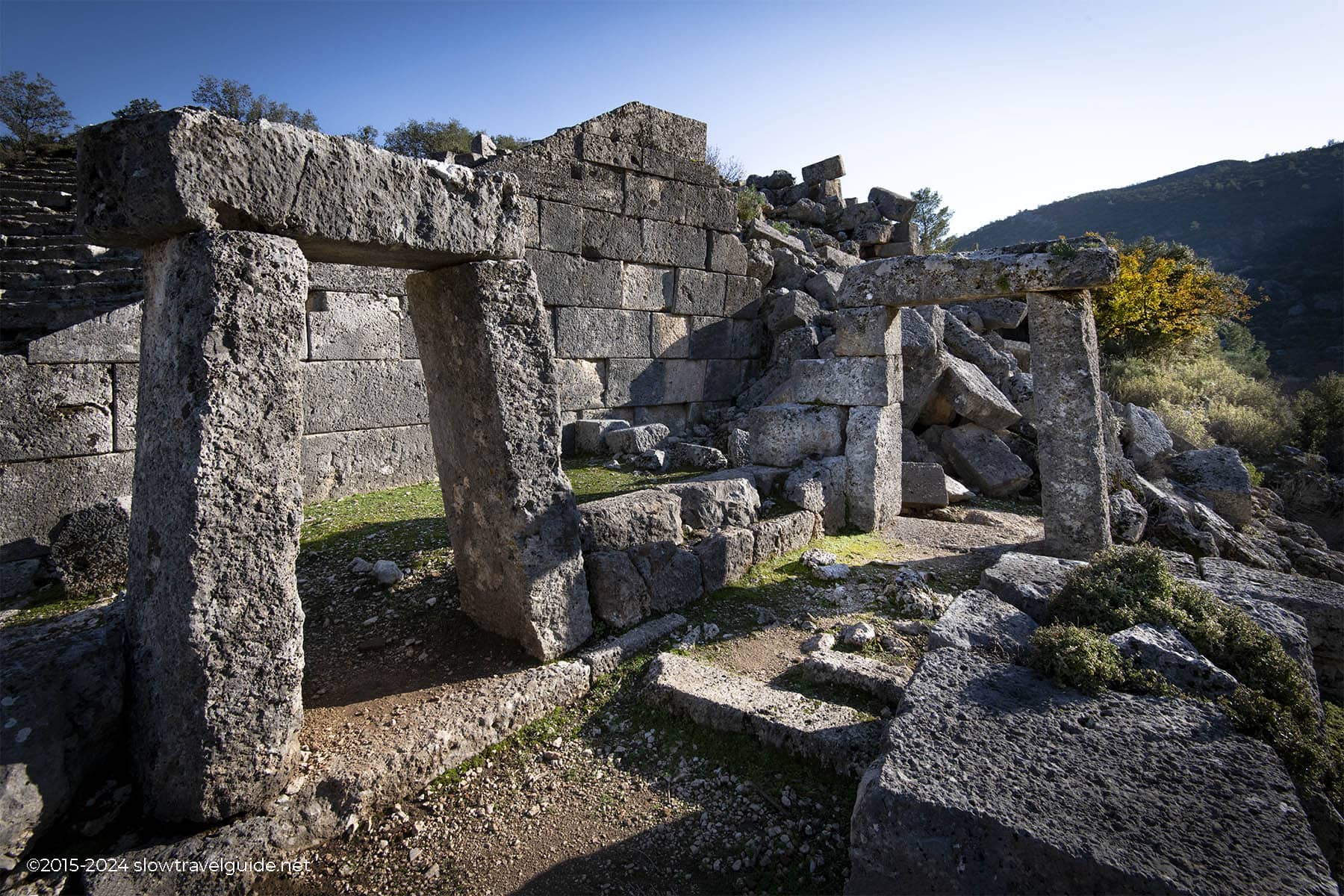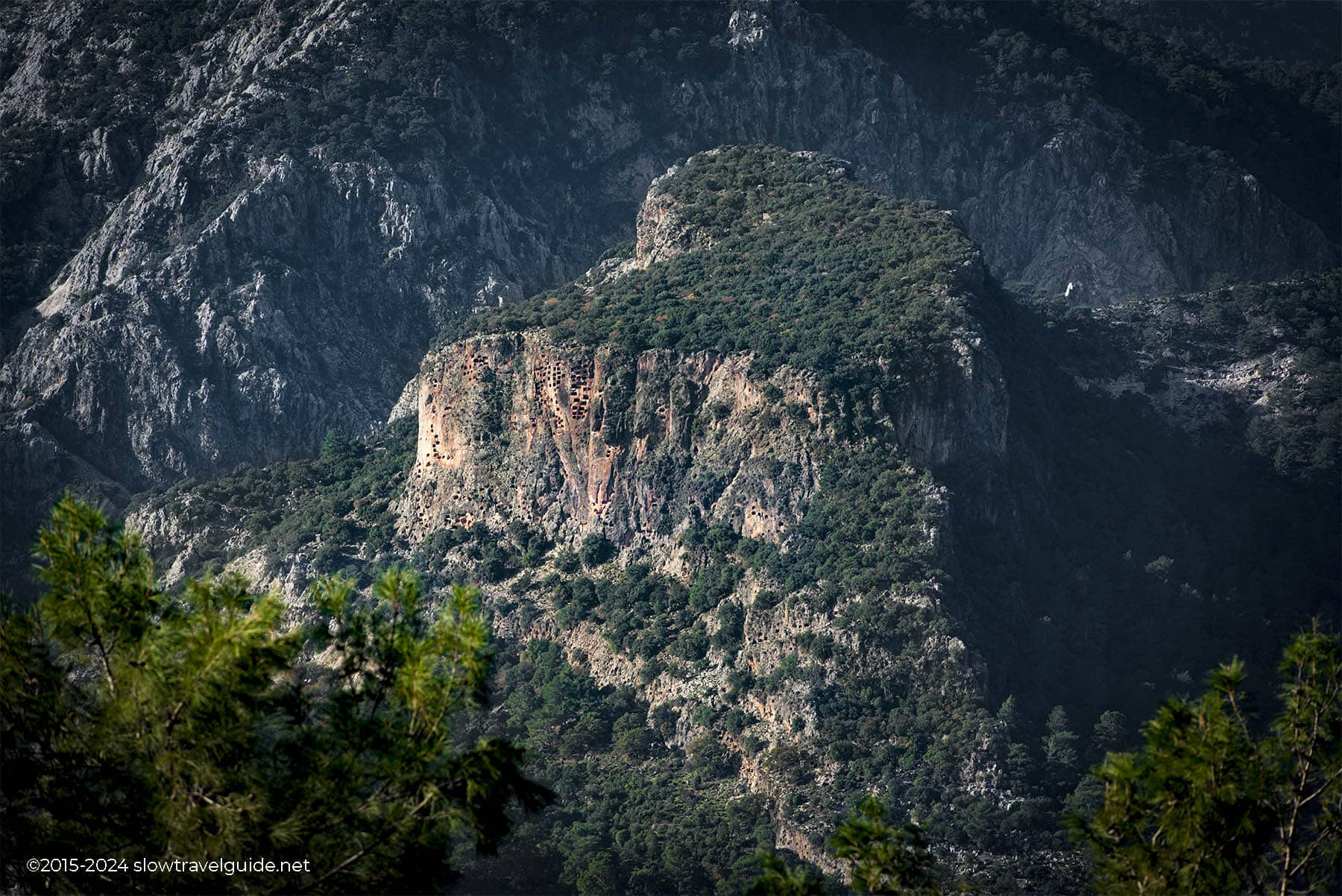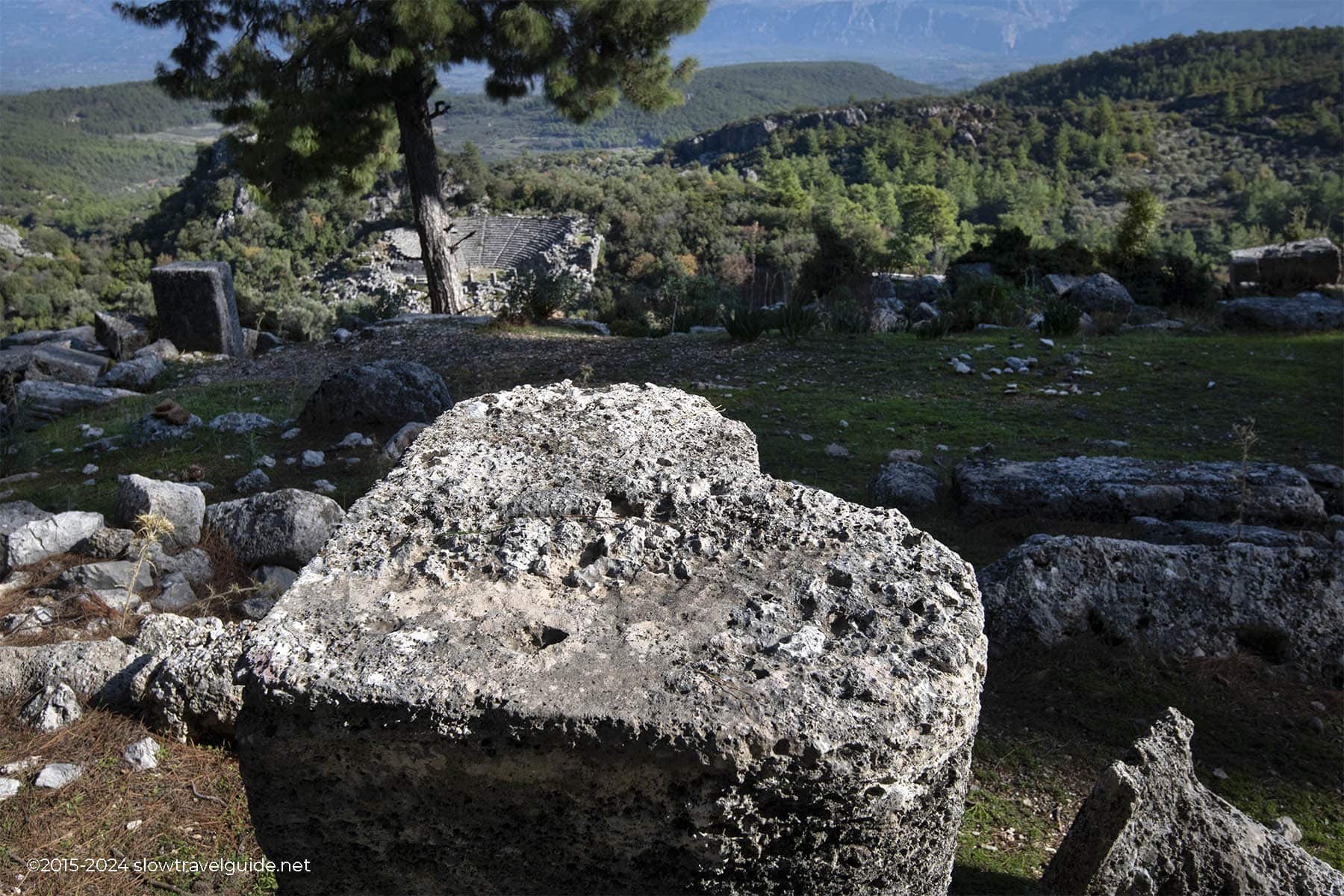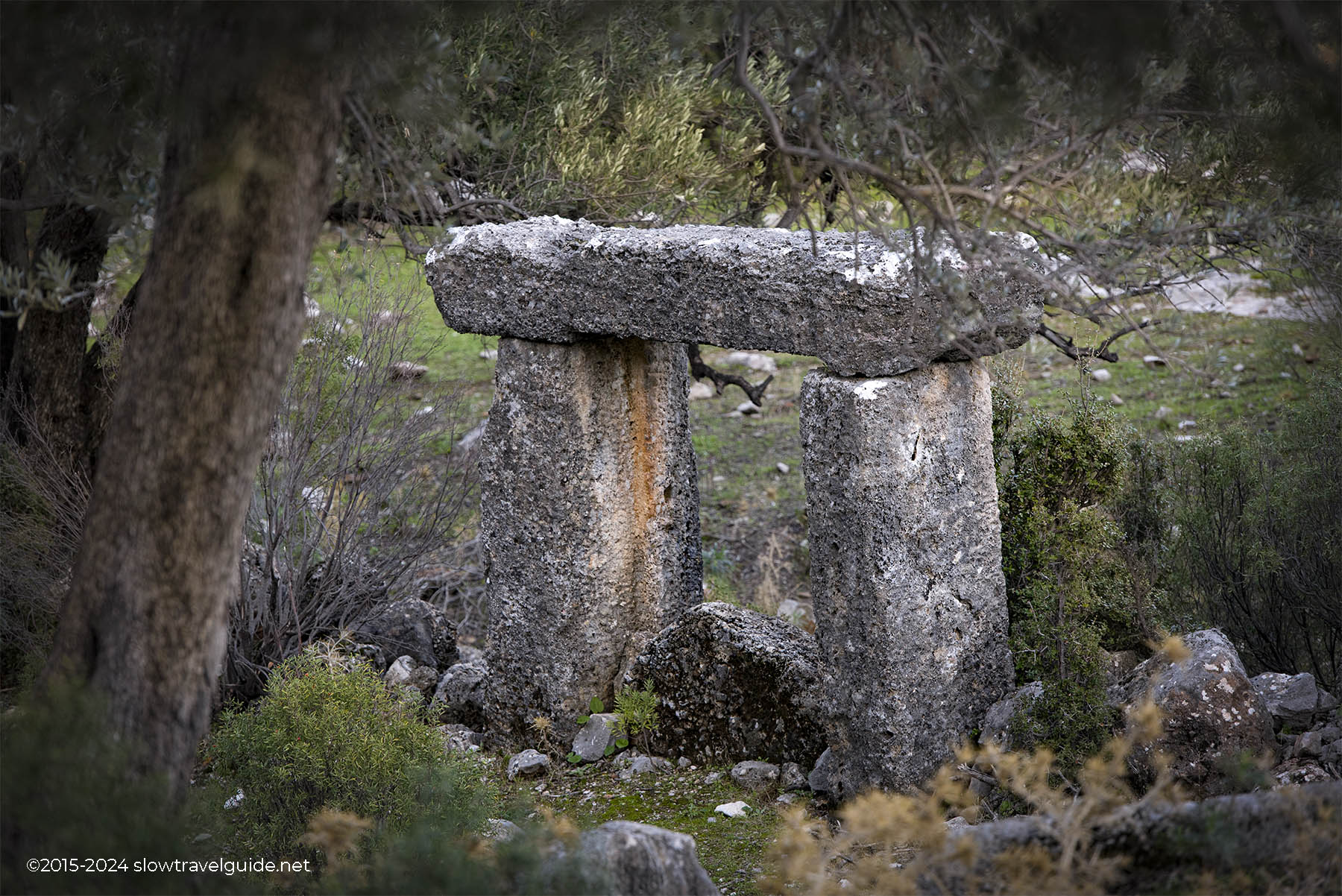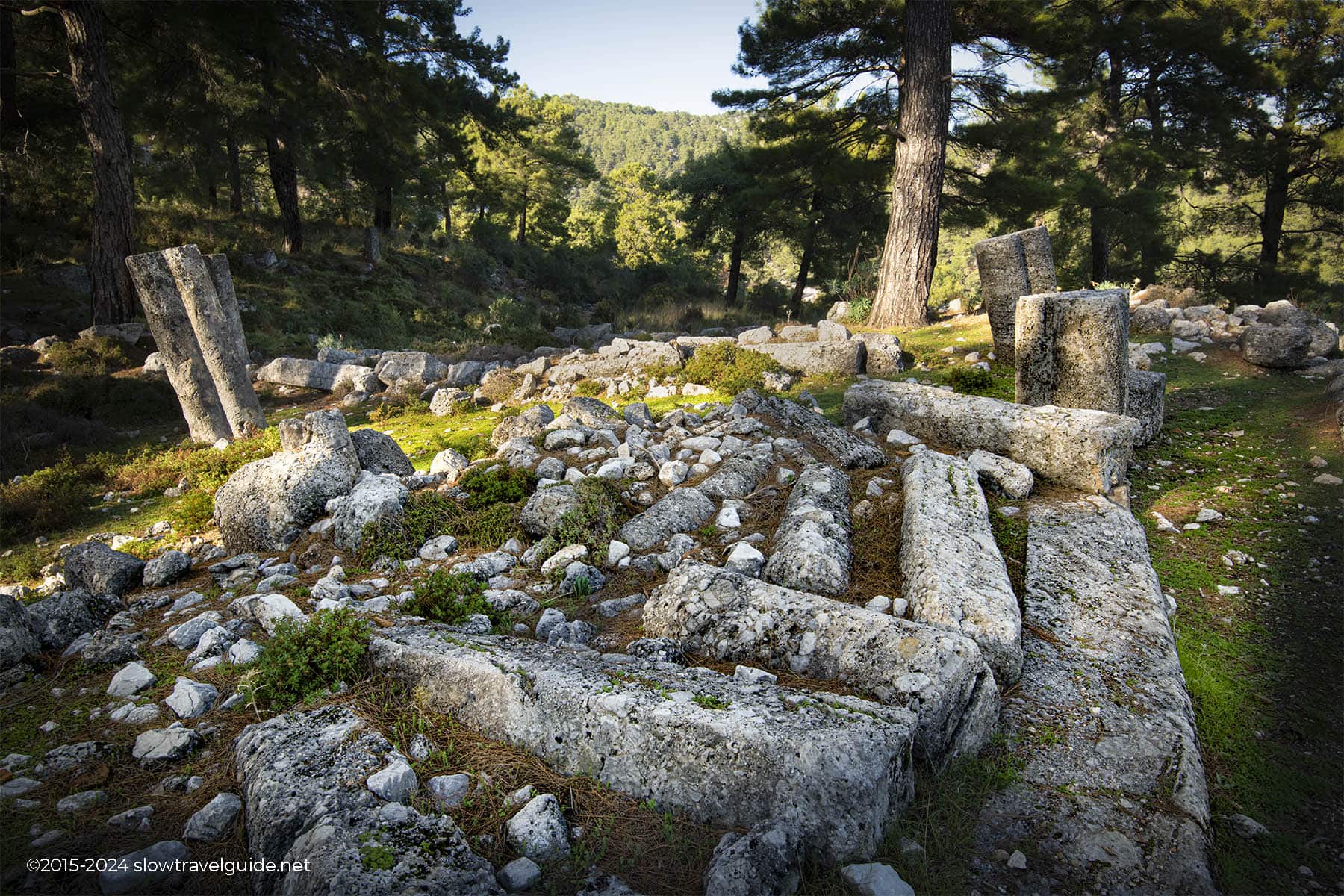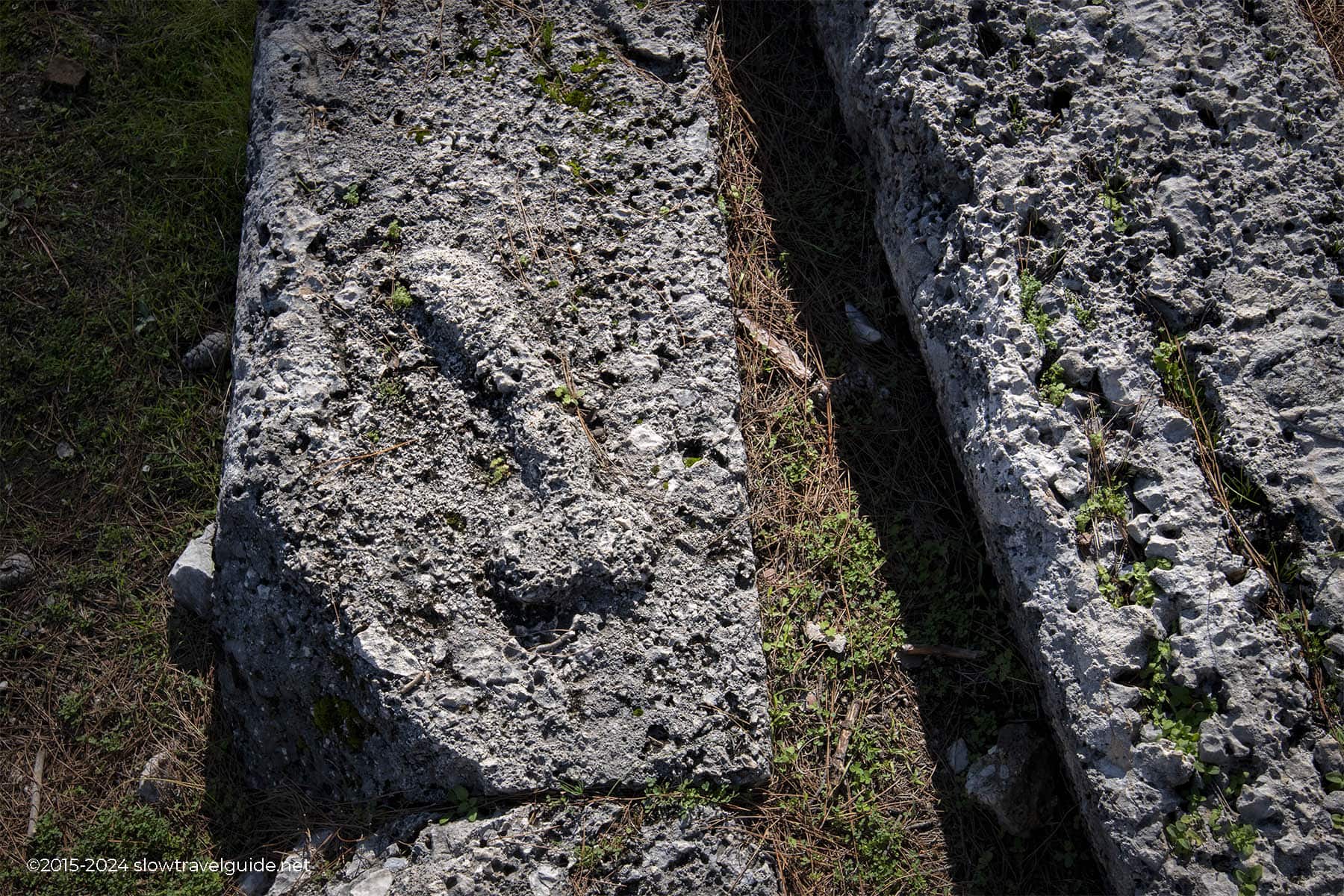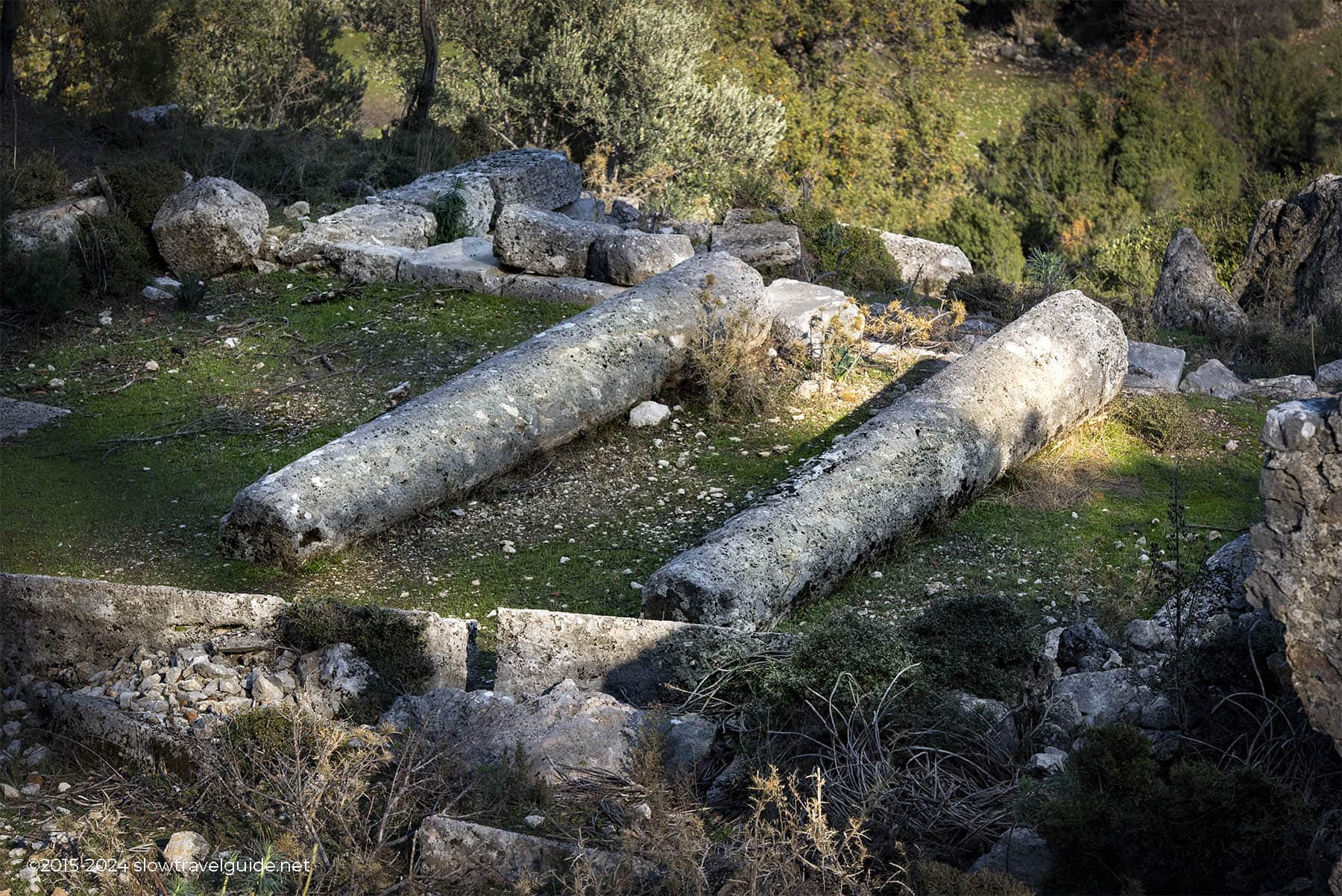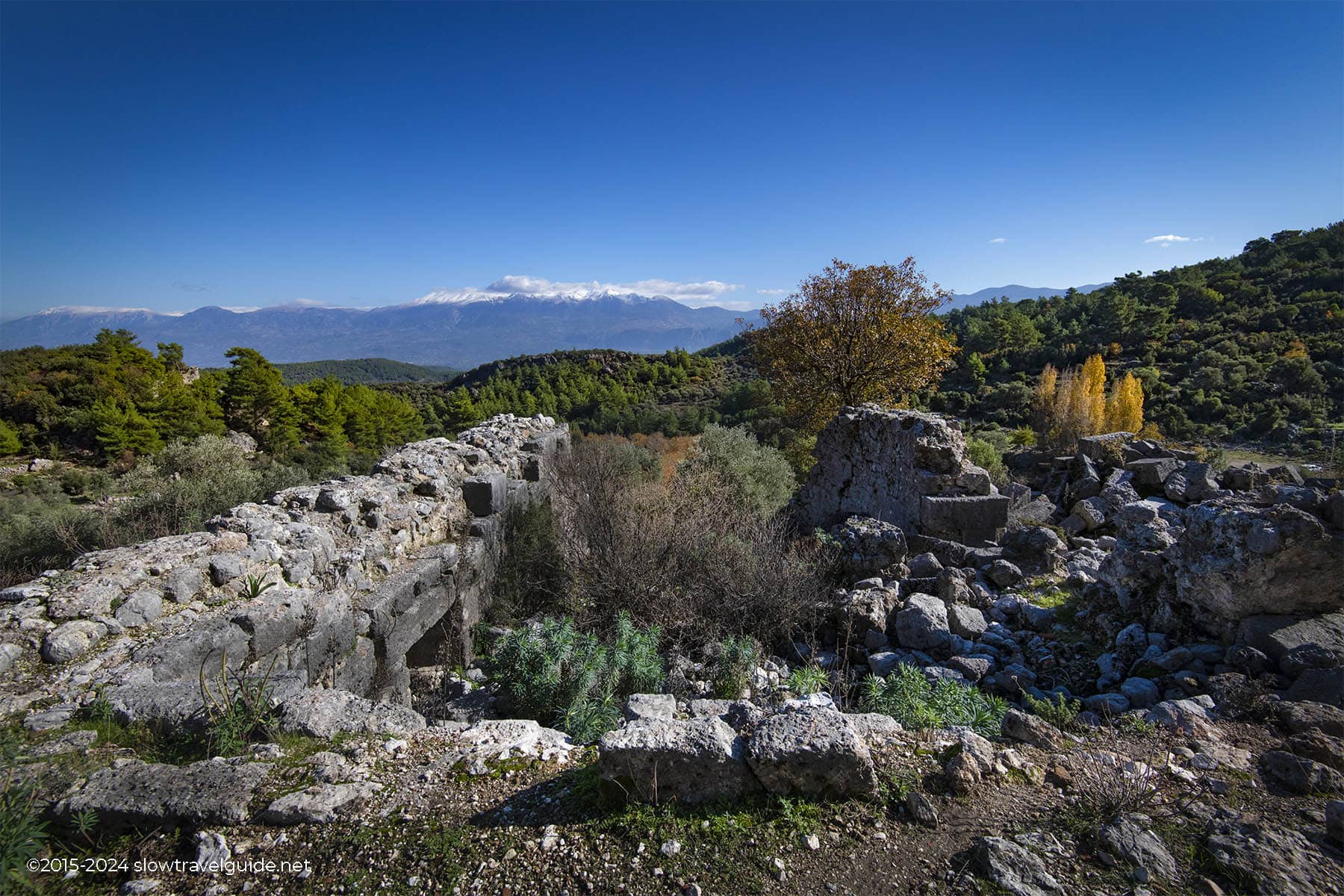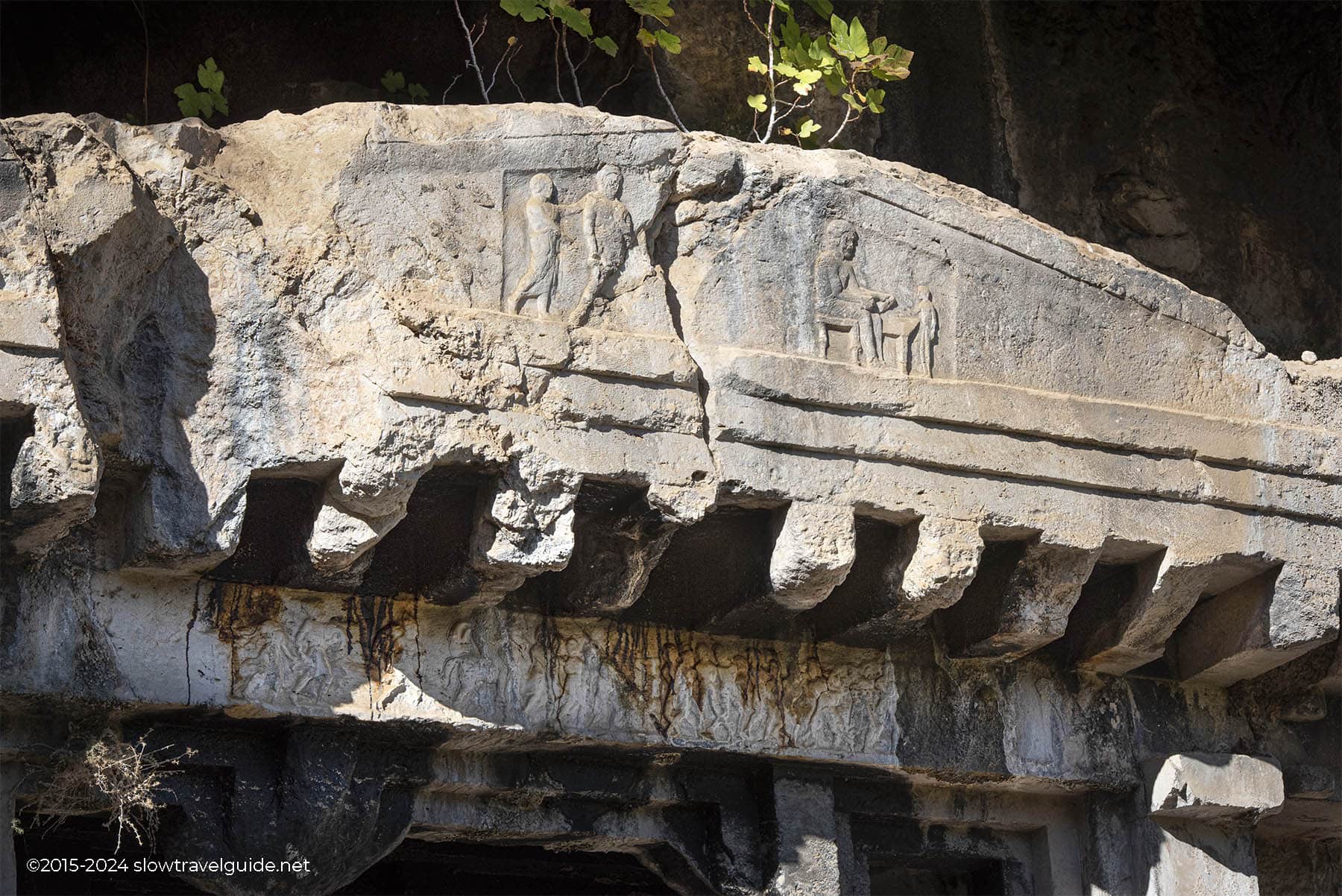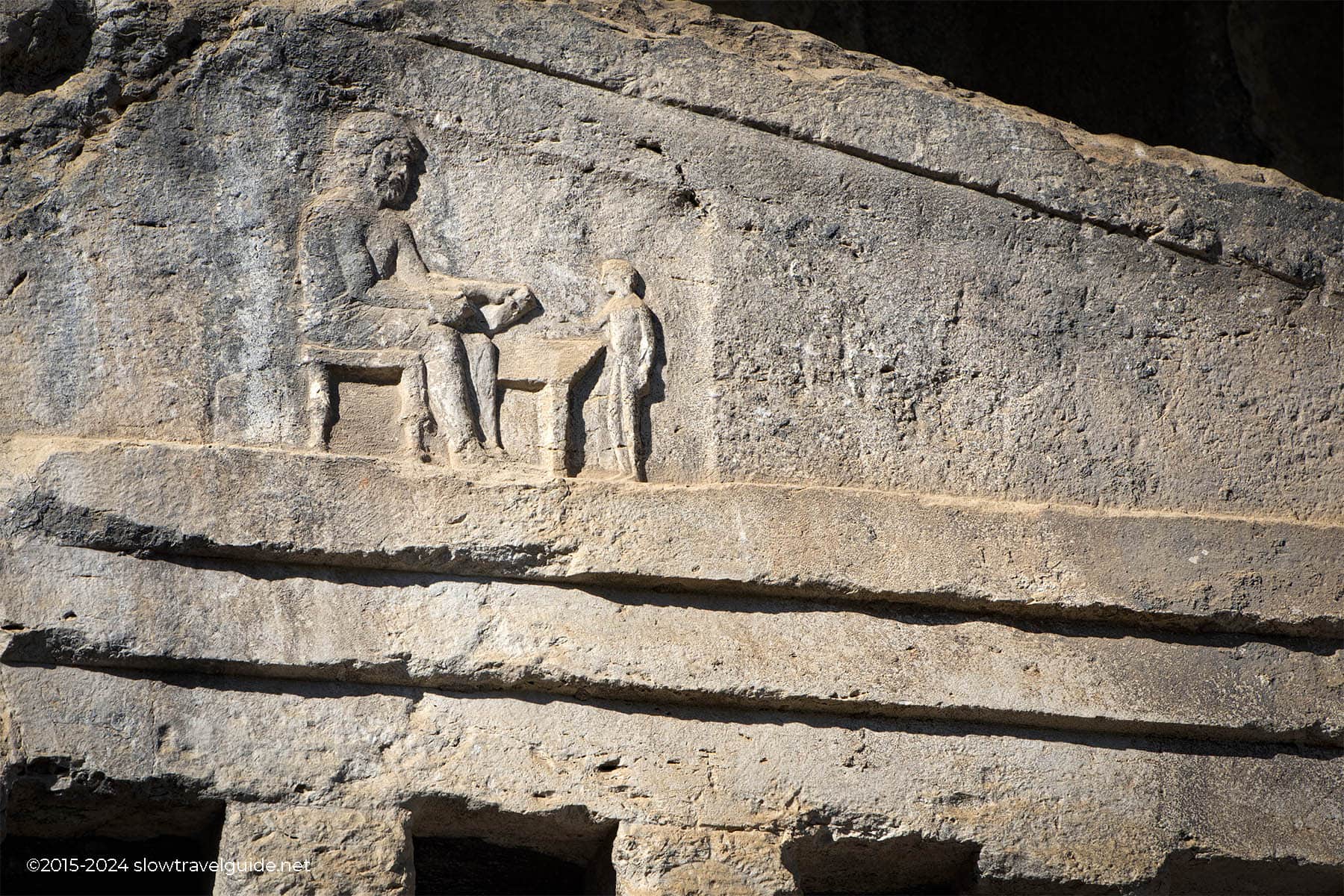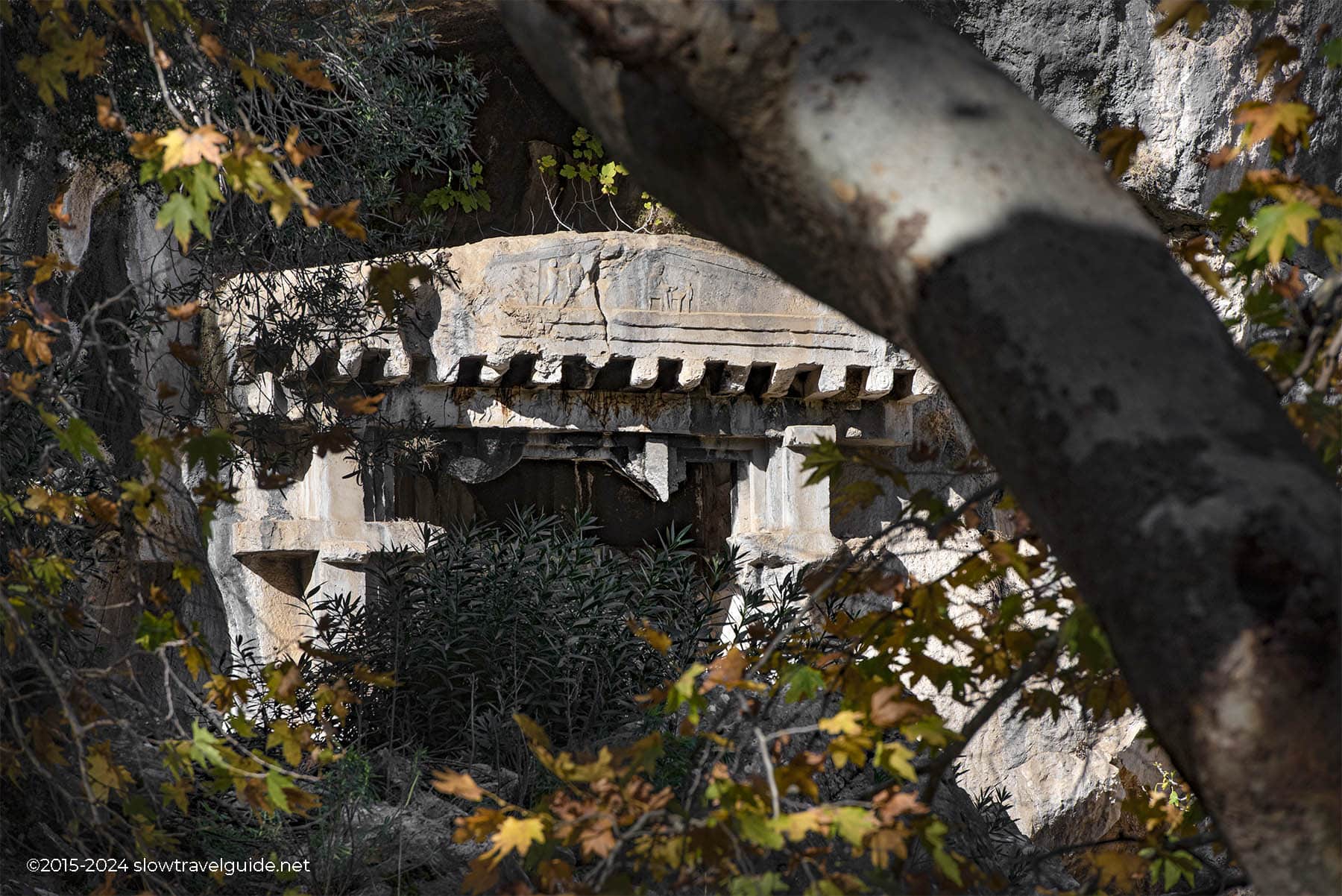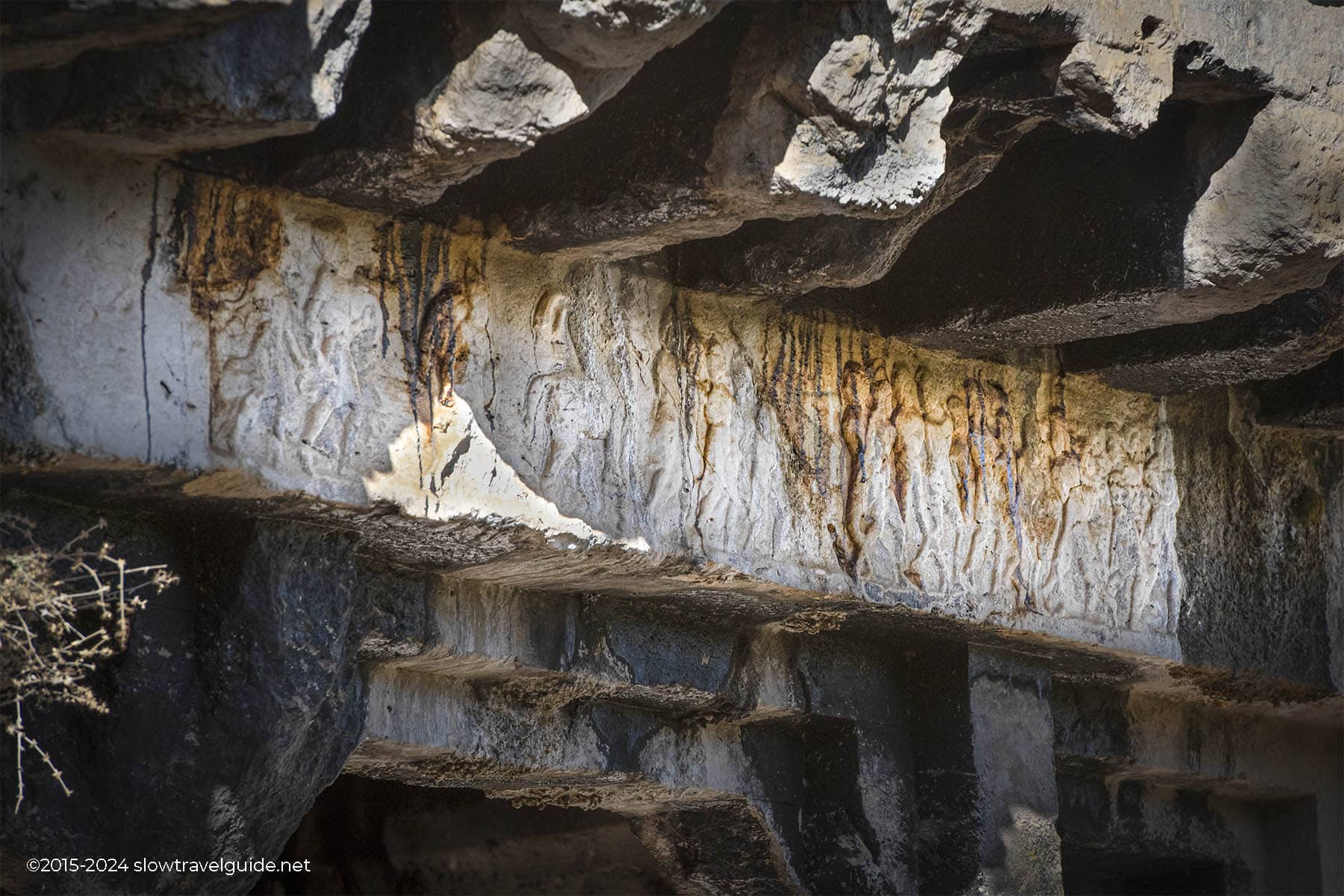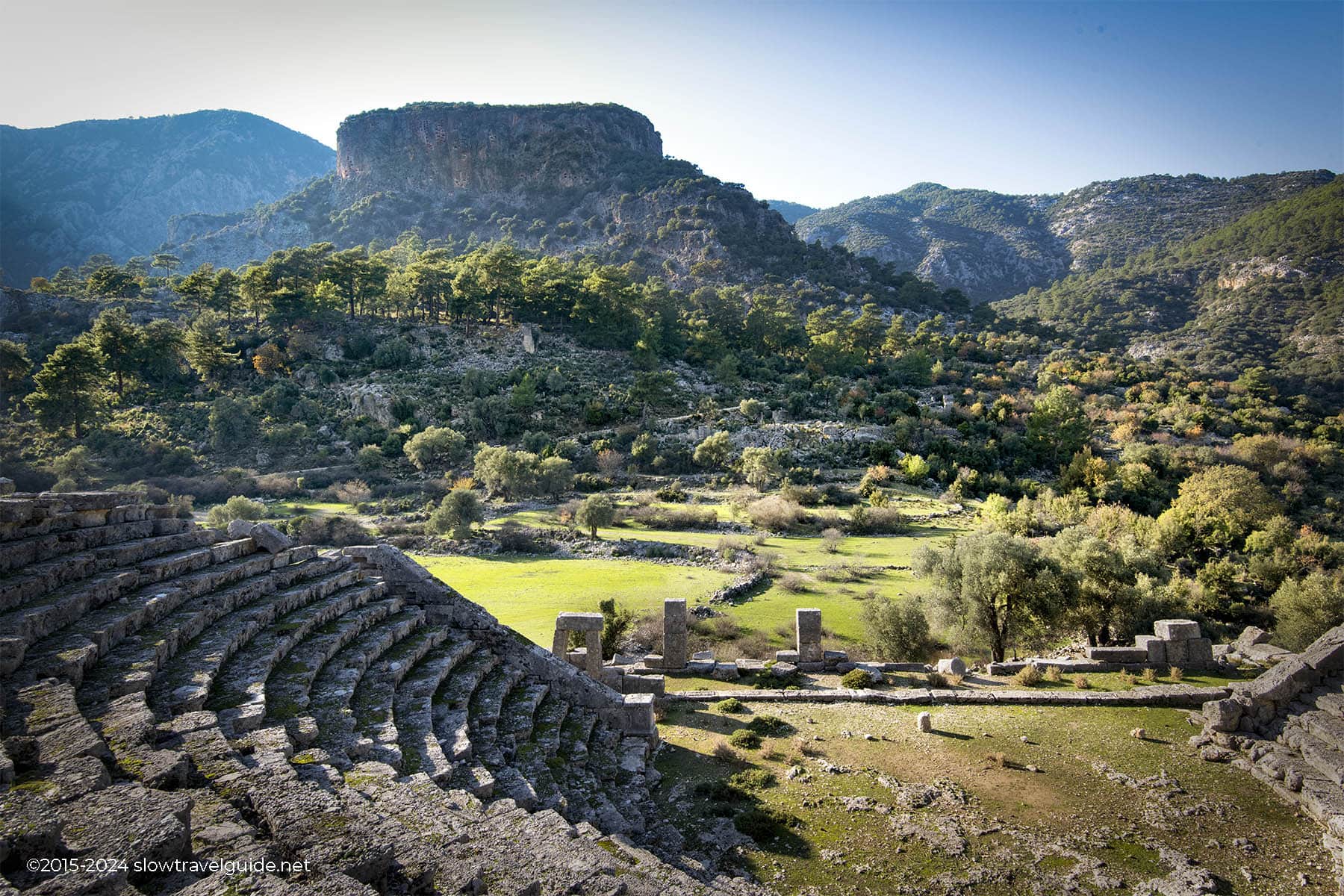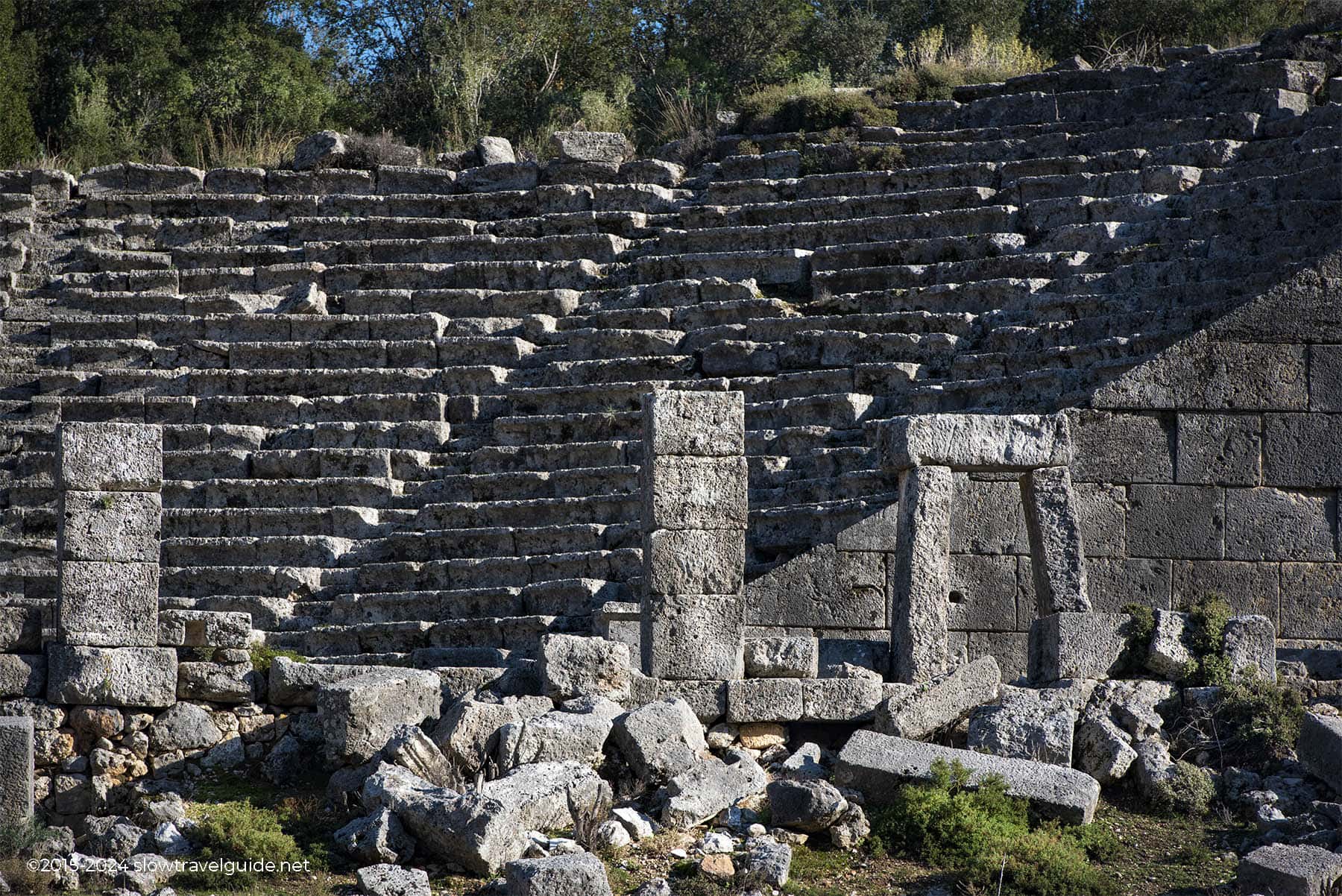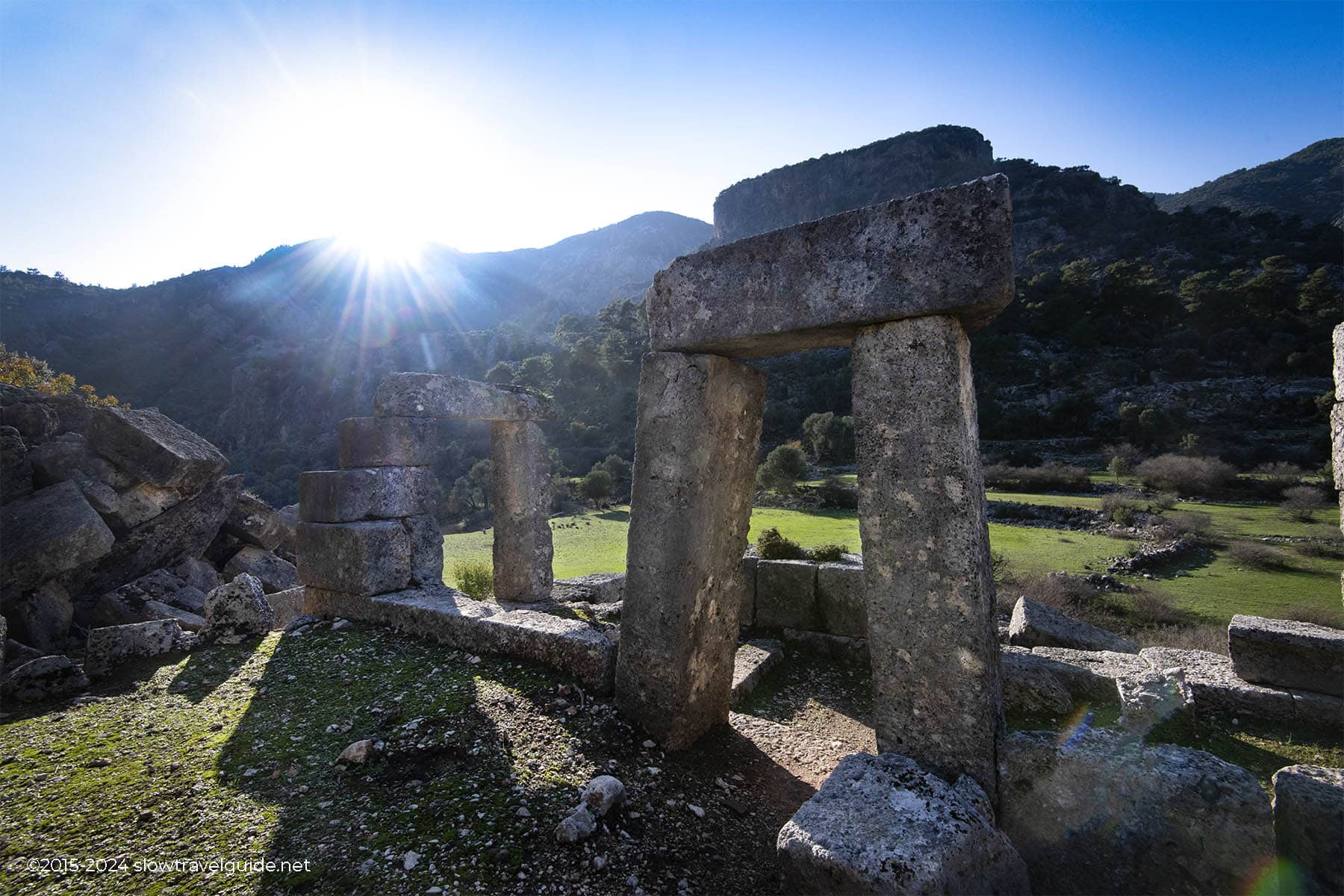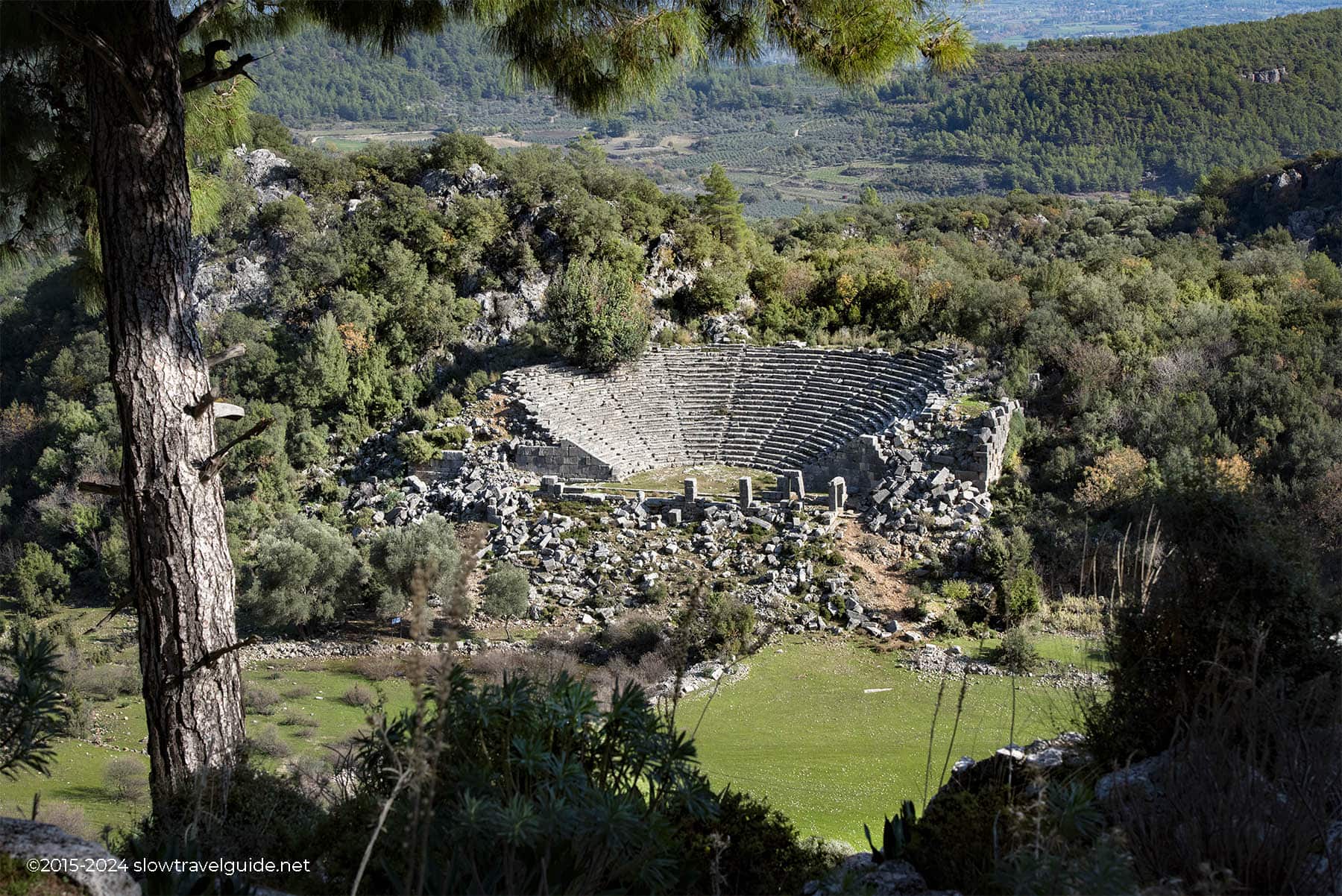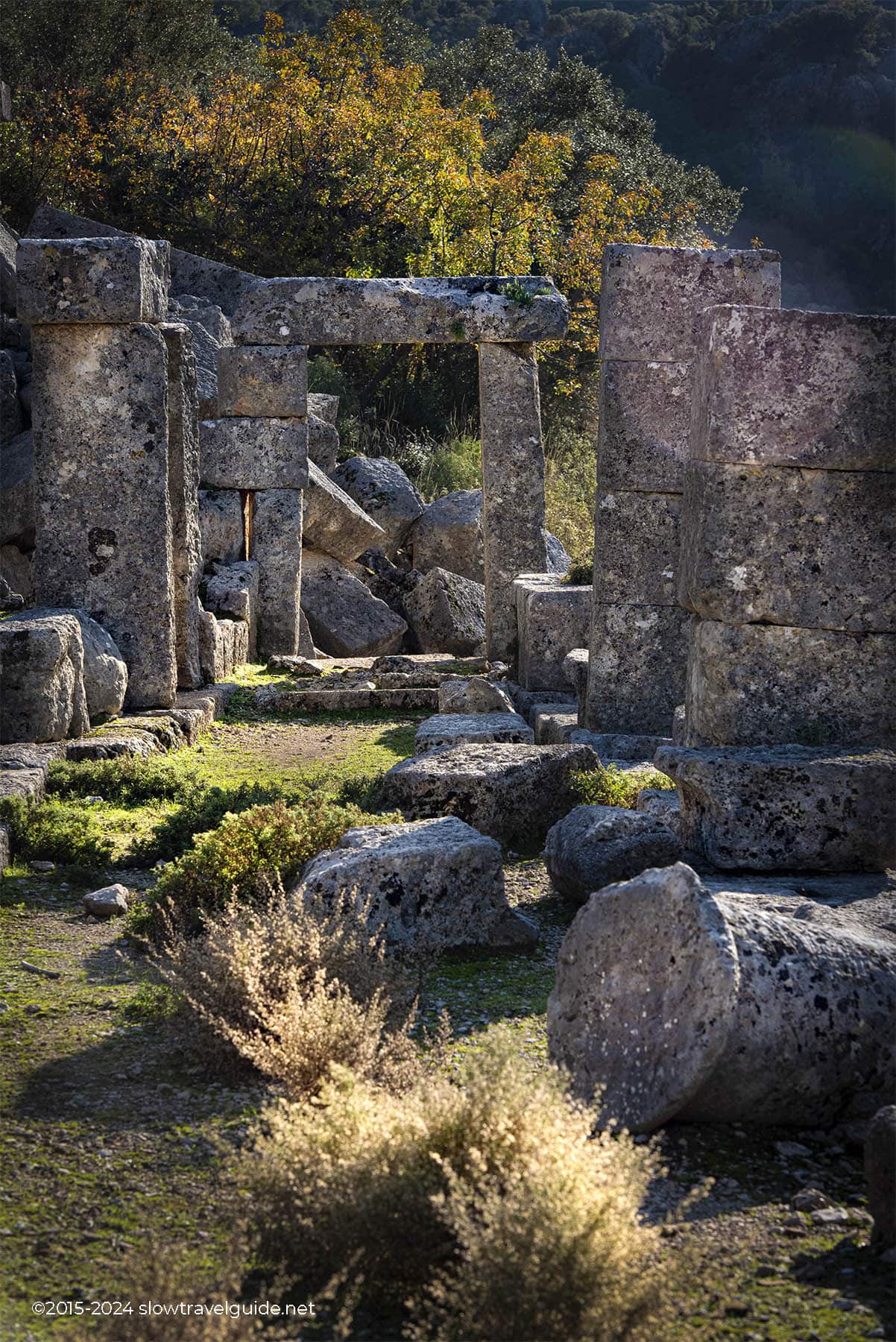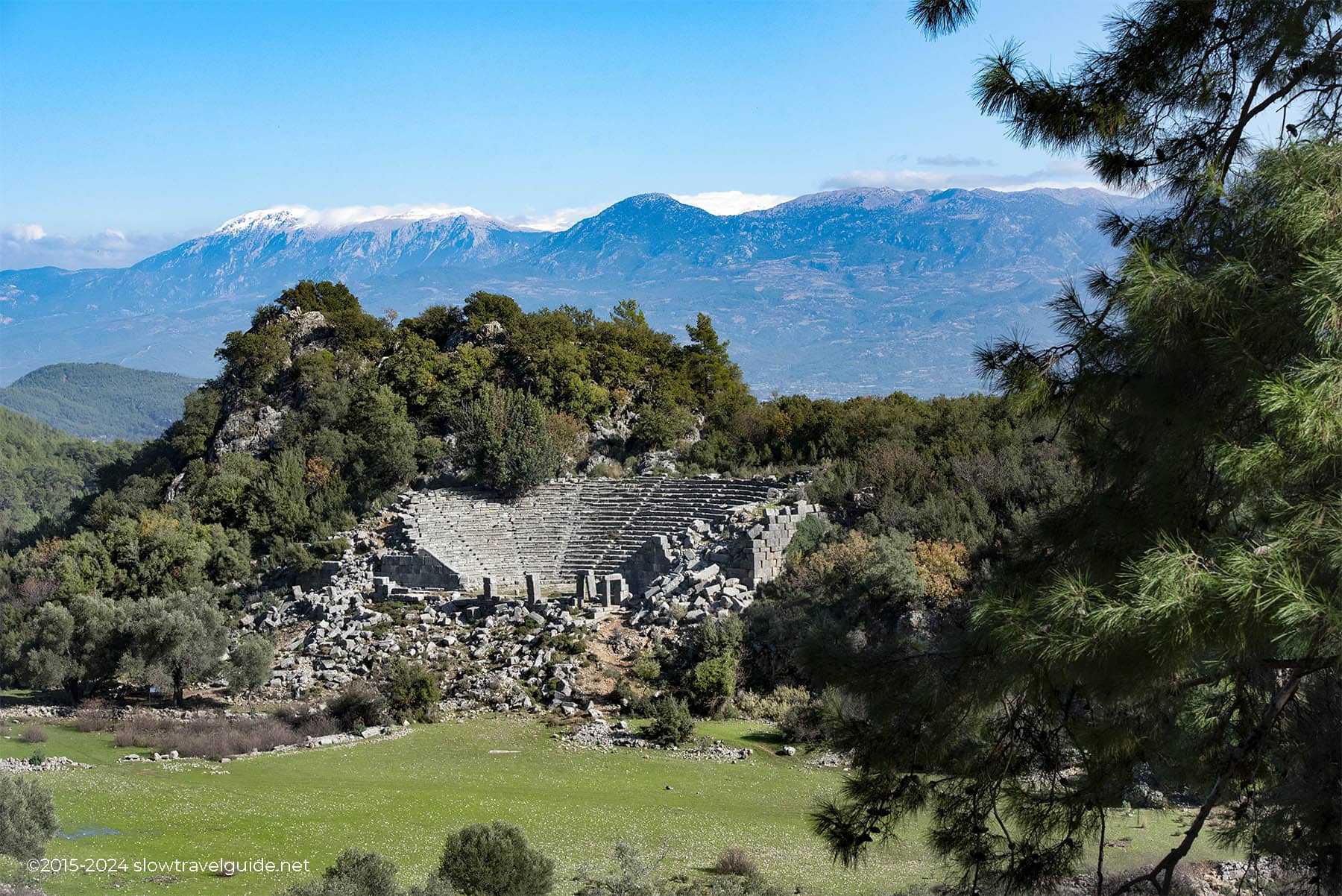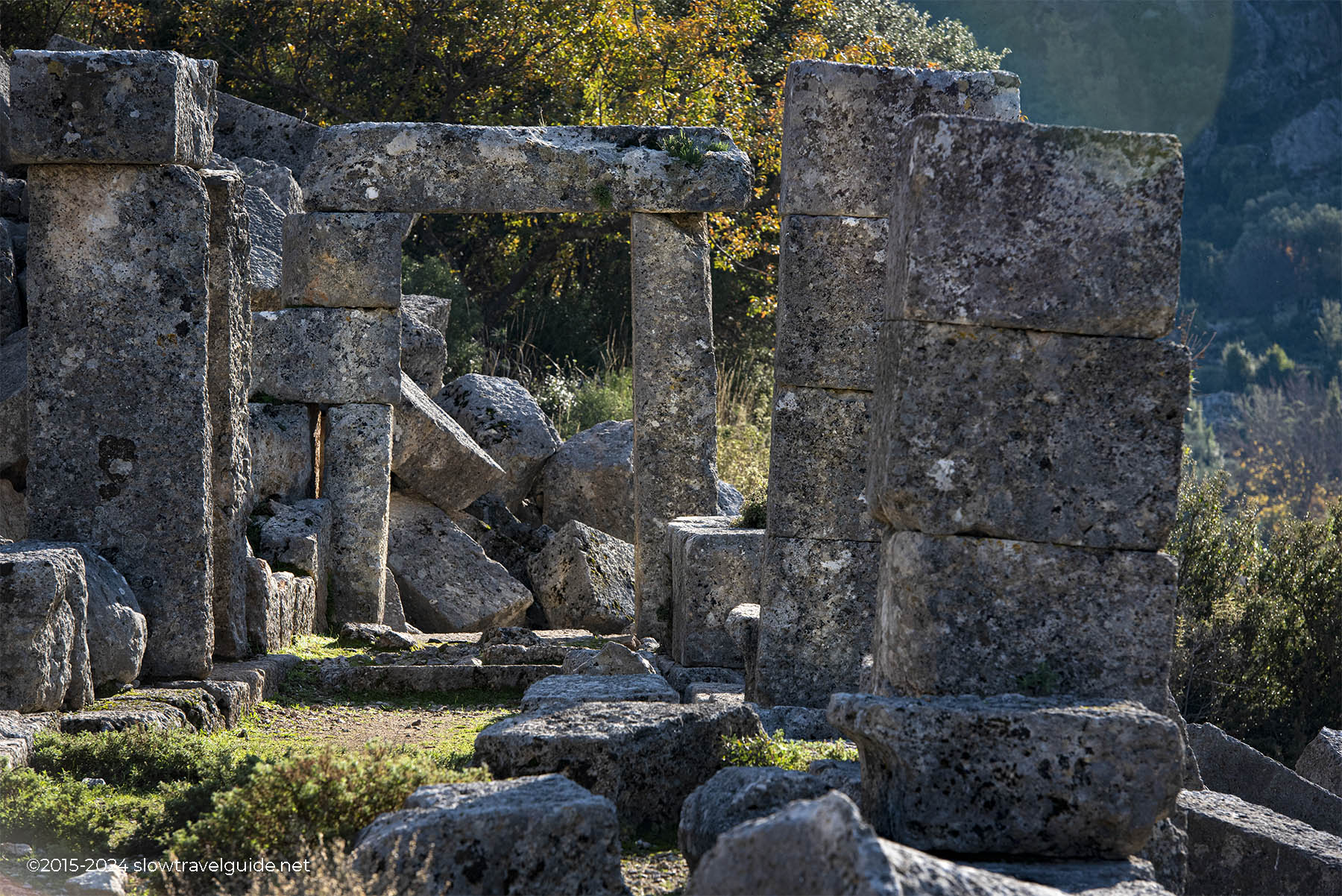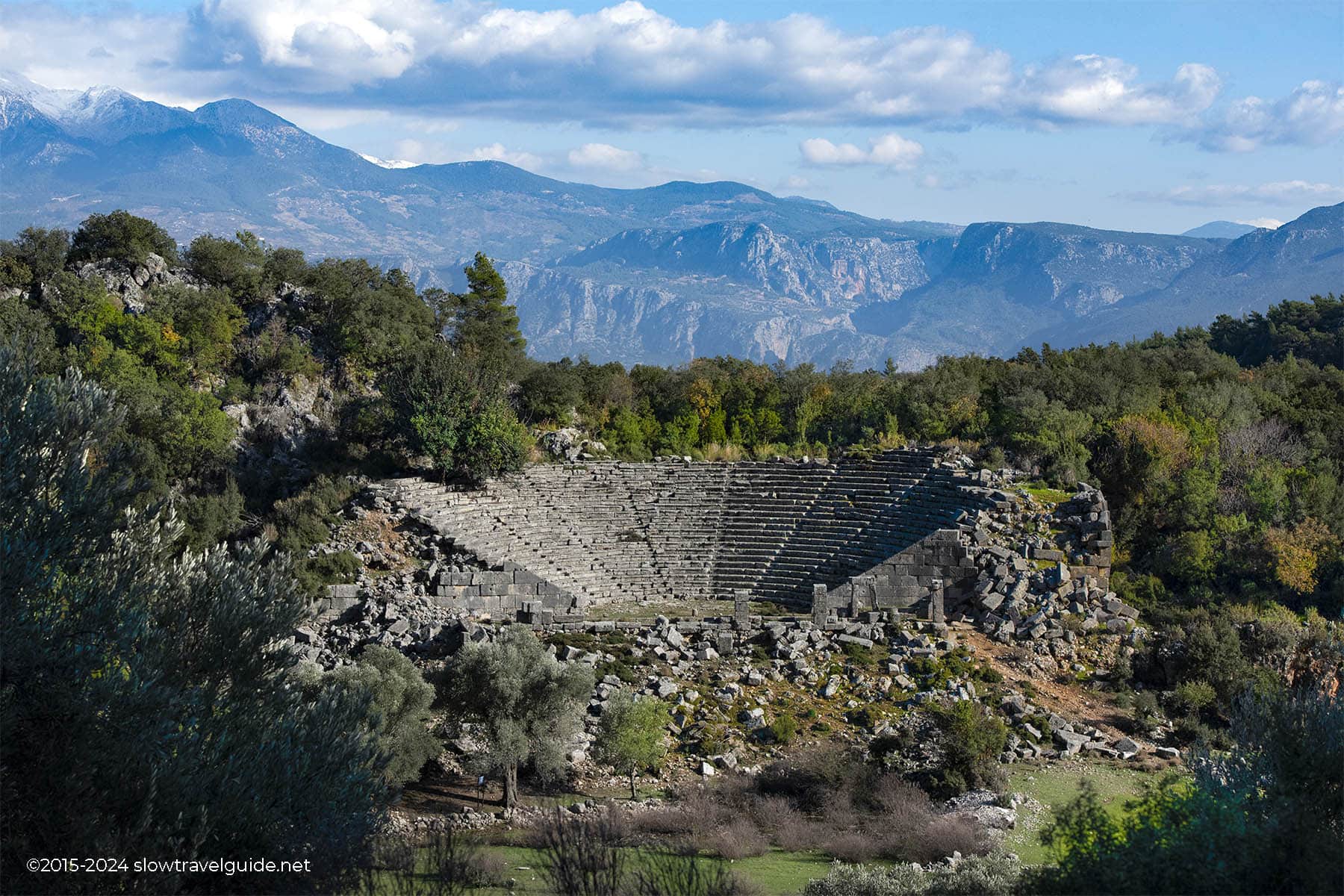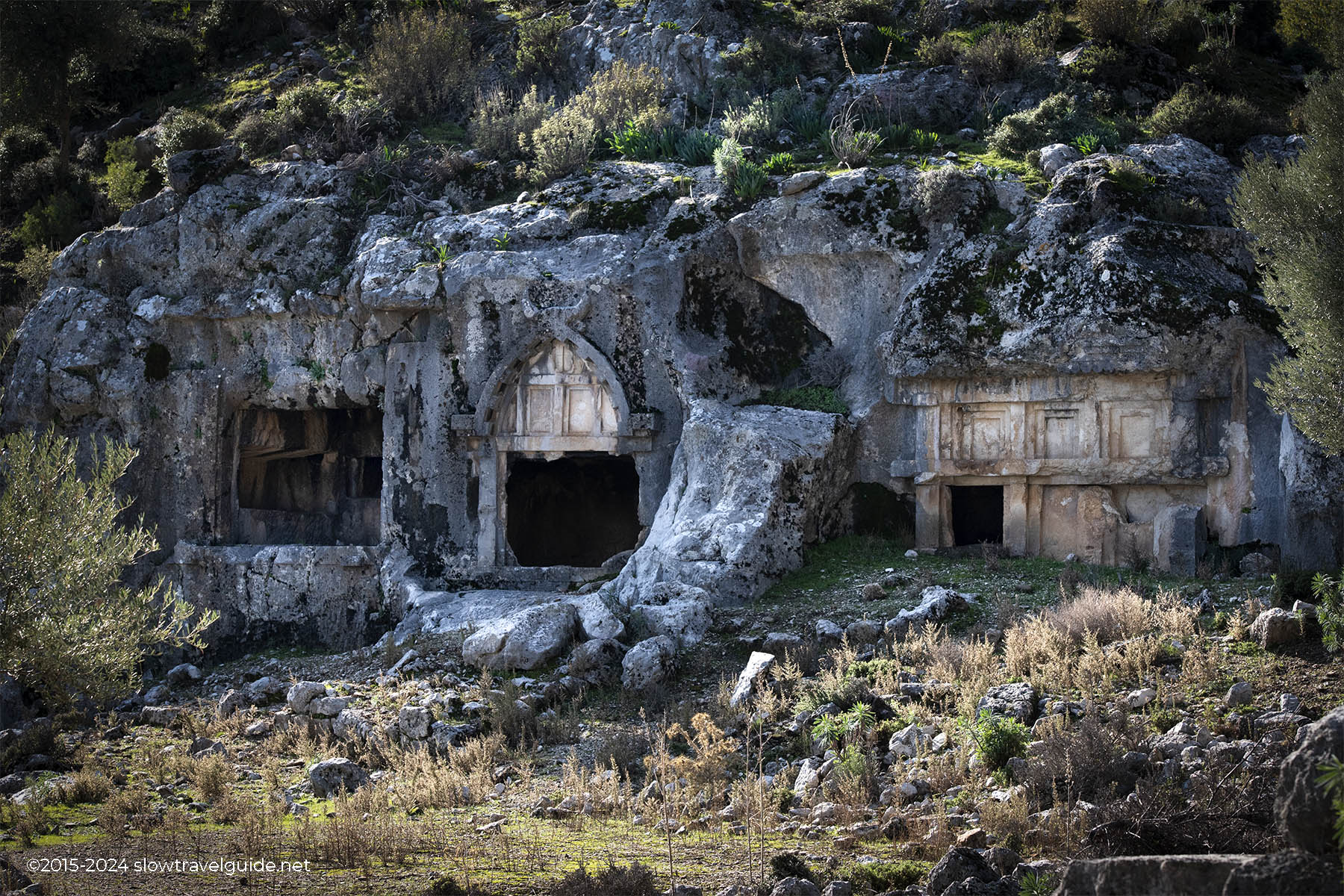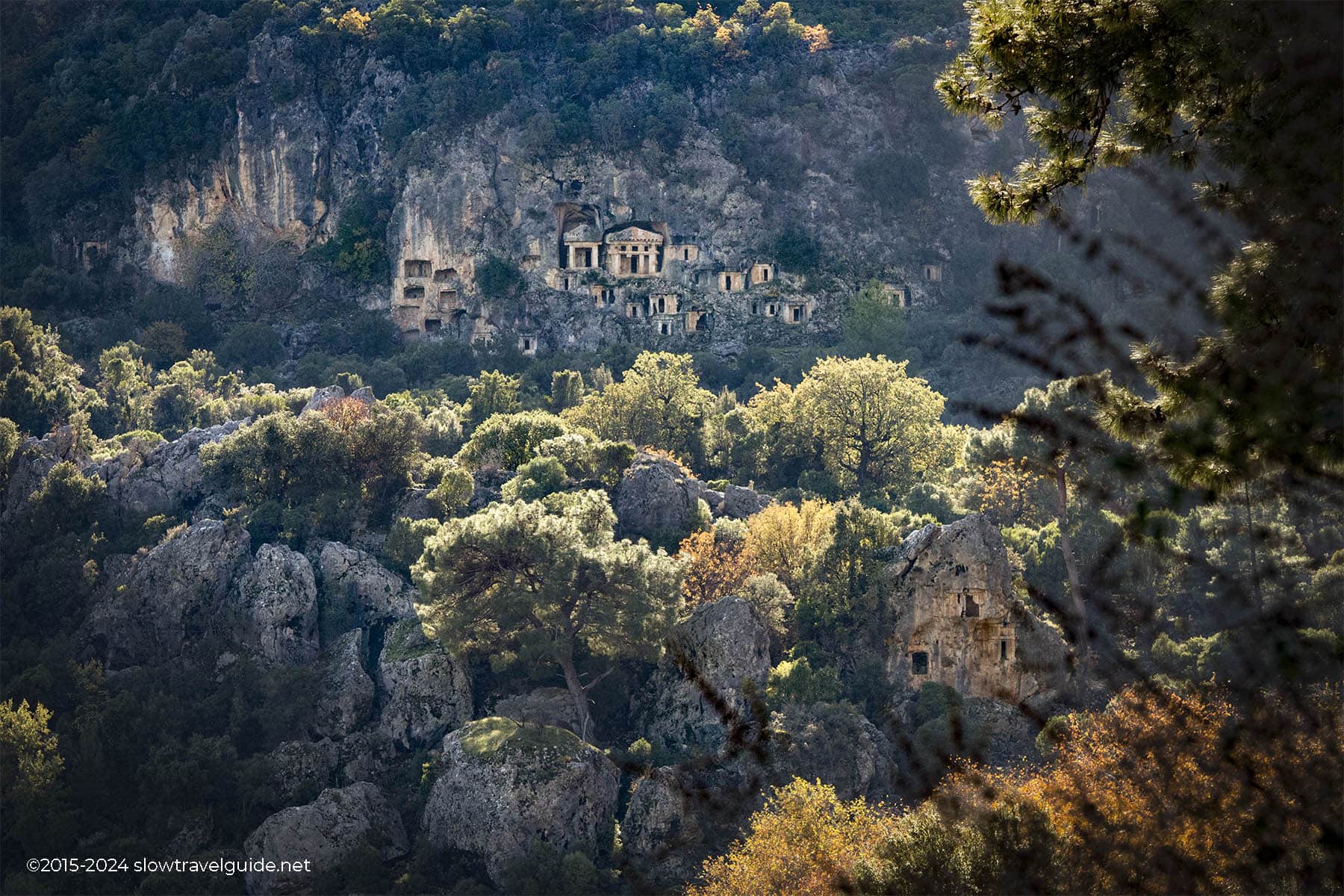PINARA
Slowtravelguide
PINARA: HIDDEN BEHIND A SMALL ENCHATED FOREST
It’s odd that despite being in full view, one of Lycia’s six major cities may be hardly noticeable. Nevertheless, Pınara is in such situation. Situated atop a mountain, the city is difficult to see from a distance. It is even more enchanted to explore this stunning Lycian landmark because, despite its immensity, the entry is concealed behind the most charming tiny woodland. When one visits Pınara, one is struck by the words “untouched,” “undiscovered,” “mystical,” and “calm.” When visiting nearby Xanthos, visitors frequently ignore this other off-the-beaten-path site.
It is true that accessing this site is not simple. During the rainy season, the road atop the mountain is rocky and occasionally muddy. Once you arrive at your objective, there are various parts of Pınara where hiking over more challenging terrain is necessary. To put it briefly, unless you’re content with a quick look at the astounding necropolis rock and a very flat walk to the theatre, this isn’t a location for anyone with mobility concerns.
LOOKING DOWN OVER XANTHOS VALLEY
After driving up the twisting road to Pınara, the discrete signs opposite the parking lot are the only indication that something might be worth seeing. A narrow path – almost a goat track – takes you to the cities’ necropolis entrance, hidden behind a forest that could easily compete with an Alice in Wonderland set.
As you ascend the mountain, you’ll be treated to an array of breathtaking landscapes, thought-provoking experiences, and never-ending surprises. Pınara is home to hundreds of tombs, a theatre, and the remnants of temples, all combined with stunning views over the Xanthos valley. The scene is breathtaking, with the scent of old olive and fig trees, pines, and wildflowers filling the air.
Hamam Kompleksinin Ön Görünümü
DISCOVERING PINARA: A CULTURAL HIKE!
A nice walk (some could even describe it as a somewhat tough hike) combined with an immersion into ancient times can be found in Pınara. It makes the experience gratifying and easy to digest, even if you are about to have “old stones” overload after seeing too many places in Turkey. Since most visitors ignore Pınara, there’s a good possibility you’ll have the whole city to yourself. By the end of your visit, the entire ambiance exudes humility and leaves you feeling totally at ease.
Çarpıcı Hamam Kompleksi
Pınara is an unexcavated site that adds to the magic with a true sense of calm, but it takes more creativity and stumbling over bits and pieces of ruins. Except for an odd sign at the entrance and another along the major path between the theatre and the Acropolis, you won’t find much information to help you navigate about the city.
According to the information board at the entry, Pānara was the name given by a group of elders who created a new city on top of Mount Cragus, which is now Akdağ, because Xanthos was becoming overpopulated. Pınara means “round,” and it’s clear where they took their cue from the top acropolis with just a cursory glance.
Pınara, one of the six principal cities of the Lycian League, received three votes. The majority of this once-large city is now in ruins, and the hundreds of tombs carved into the dominant upper acropolis are without a doubt the most amazing sights. Beneath it are the remnants of an agora, an odeon, a temple, and a bath house, all constructed during the Roman era.
Magnificent “house-type” rock tombs that resemble Lycian architecture can also be found in Pınara. Some are seen on the steep walls that round the valley, and if you follow the signs at the entry, you can also see a few exceptional specimens. Some of the decorations have incredible detail and preservation.
Pınara’s theater is extremely well-preserved. Located opposite the acropolis, it offers striking views of the entire city. A perfect spot for a well-deserved break
Admit It, What A View!
PRACTICAL INFORMATION FOR YOUR PINARA VISIT
Pınara deserves at least half a day of your time. It is a site well worth visiting when you are in the Fethiye–Kaş area. It may be less known, but this should be all the more reason to give it the credit it deserves. Pınara is easily reached from the D400 road between Fethiye and Kalkan.
If you have some more time to spare, why not take the scenic route to Sidyma as well? Or, if you’re driving from Fethiye, skip the main road entirely and enjoy a lovely drive in a stunning setting taking the Esenköy route. Use a GPS, as the site isn’t signposted until you’ve almost reached your destination.
Click to see places to stay near Pınara on a map
Bull Headed Rock Tomb
POSTS NEARBY
- Babadağ: the million $ view, home to Ölüdeniz paragliding87 km
- Slow travel journey: Always Take the Scenic Route13 km
- Sidyma, Turkey: where cows pose next to Lycian Sarcophagi85 km
- Chasing the hidden waterfalls in Kabak67 km
- How to get to Butterfly Valley, Turkey?81 km
Önerdiğimiz Lokasyonlar
Places We Recommend
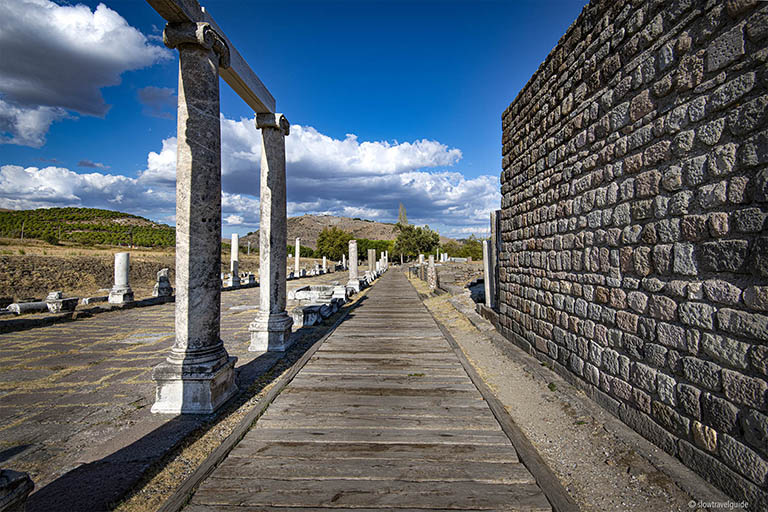
Asklepieion
Visiting the Asklepieion in Pergamon was a revelation in many ways. This ancient site is overlooked by the Acropolis of Pergamon and is very attractive. (Coming soon)
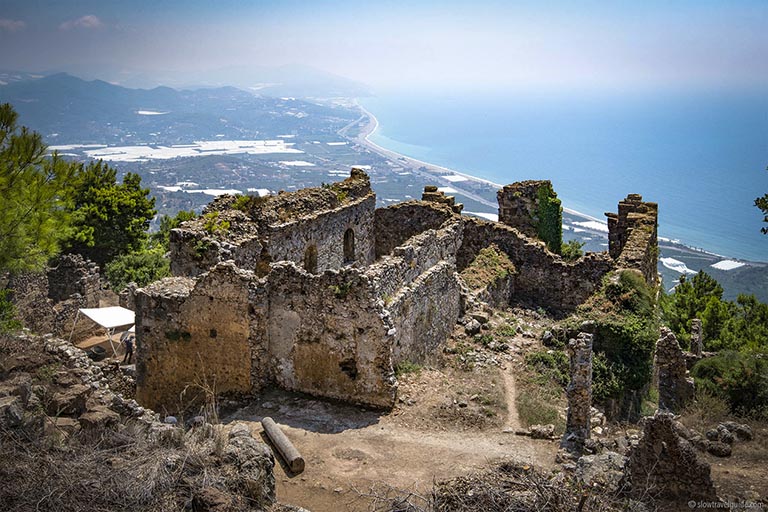
Syedra
If you are looking for an excellent ancient site near Alanya, check out Syedra. This place is best known for its pictures of bathing sites on the coastal slopes of Mount Taurus on the southeastern coastline of Alanya. (Coming soon)
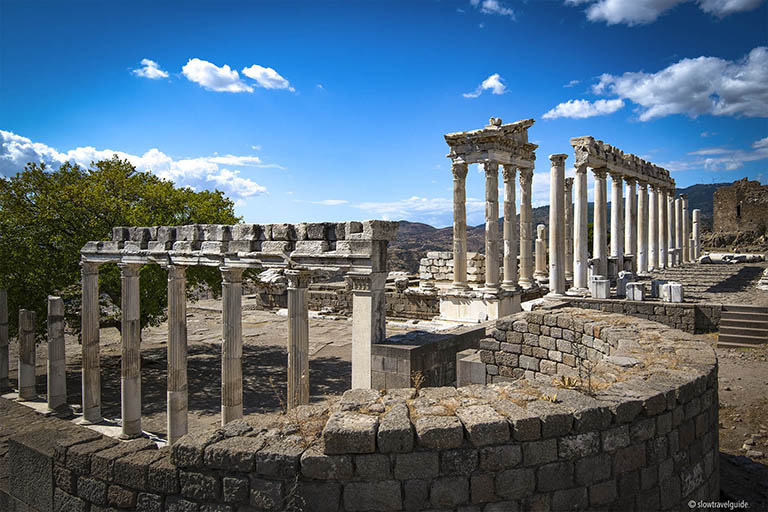
Pergamon
Theatre and three-terraced gymnasium are perfect examples of how existing natural rules can be integrated into urban planning. (Coming soon)
© 2016-2022 All rights reserved by slowtravelguide.net.
The content of this website is copyright protected and the property of slowtravelguide.net.No part of this website may be reproduced in whole or in part in any manner without the written permission of the copyright owner.
Copyright ©2016-2022 Tüm hakları saklıdır. Bu (slowtravelguide.net.) web sitesinin içeriği koruma altındadır ve slowtravelguide.net.Buradaki hiçbir içerik (yazı,fotoğraf,video vb.) izinsiz olarak kopyalanamaz, alıntı yapılamaz,başka yerde yayınlanamaz.

